
Tommy Orange's Praise for Oscar Hokeah's Debut Novel, CALLING FOR A BLANKET DANCE
As many of you already know, I've been out of the loop. Also many of you know about my debut novel. I had been promoting it on my social media constantly for months after it released in late July 2022. Then tragedy hit my family. I became distracted and consumed by my little sister's well being. I deleted all my social media. In the last few days, I've had a little more time to come back to this layer of the multiverse. Guess what I stumbled upon? Lit Hub released an article in the middle of December titled "88 Writers on the Books They Loved in 2022," and I was shocked to find Tommy Orange's praise for my debut.
I sat with my sister on Christmas day. The right side of her body paralyzed. She was unable to speak, and is still unable to speak. I've been helping her daily try to enunciate vowel sounds. Since the left side of her brain was affected by a major stroke, she'll need to relearn to speak again. I bought my sister a Christmas gift and I watched her open the wrapping paper. There are moments when she functions very much like a child, and watching her open that gift made her appear like small girl to me. She pulled the soft pillow from the paper and immediately started rubbing it against the side of her face. She wore a big smile. Christmas was my birthday. I was born on December 25th. It was one of the best birthdays I've had in a long time.
Jumping online again to discover all the amazing articles about my debut is a nice surprise after the last two months. There's been mentions with Time, Kirkus Reviews, BookPage, Tribal Journal, and too many others to mention them all. A lot has happened since I've been away. Who knew the multiverse was so action packed?
I was especially surprised to find Tommy Orange's mention of my debut. Orange wrote the groundbreaking novel, THERE, THERE. It received a tremendous amount of praise, and I remember buying his book for friends and family during the holidays when it was initially released. This is the book that started the latest Native American renaissance in literature. One I'm especially grateful for since my debut has benefited from the renewed interest in books written by Native authors. When I stumbled upon Orange's praise of my book, I was shocked and humbled. Here's what he had to say:
"The book I got the most excited about in 2022 is Oscar Hokeah’s Calling For a Blanket Dance. It’s such a vital and powerful novel, giving us a wide range of voices over decades of Native life in a new and real way, from a writer I will from now on read everything he writes. Lately it’s felt like I either don’t like a book enough to finish it or love it so much I read it again immediately after finishing it. Often I’ll read the book first then listen to the audiobook (I did this with Tess Gunty’s The Rabbit Hutch this year too), and the cast and performance of Calling For a Blanket Dance is so satisfyingly dynamic and nothing less than stunning. I could not more highly recommend this book." --Tommy Orange, author of There, There
I'm truly grateful for Tommy Orange's words here and I hope I get the chance to thank him in person one day. I'm also honored by Lit Hub for their article "88 Writers on the Books They Loved in 2022." You can find my debut novel, CALLING FOR A BLANKET DANCE, at your favorite local bookstore or online retailer: Bookshop, Barnes & Noble, Amazon, Target, Walmart, Books-A-Million, IndieBound.
Tips, Tricks, and Doodads: Watch Out for Exposition! It's a Plot Killer!
I can't tell you how much I hate exposition. I know hate is a strong word. But it kills my plot. There I am plotting along. Happy as can be. I love plot. Plotting along is my favorite thing to do. Then here comes "necessary info." And in order to do my favorite thing I must engage with the thing I dislike the most.
The type of exposition I'm referring to is most commonly known as the "info dump." It's necessary information--often backstory--about characters that ultimately keeps the plot moving forward. So if you're reading about someone traveling to Tahlequah, Oklahoma for the Cherokee National Holiday, where they are about to reconnect with a long lost Cherokee sibling, you're going to need to know what first set them on this trajectory. The why and how is the plot. But nobody likes the what. It's all about the how. Everybody loves the how. How do I know this? Because how is the reason why I hate the what.
All kidding aside, I tend to minimize this type of exposition. Sometimes it involves introducing the characters in the novel. Readers must know all the major players. I tend to want to put this at the beginning of the novel so it doesn't disrupt my plot at critical moments later in the story line. I feel like it's early in the novel where readers have the most patience for this type of information. The "who's present" and why and how they effect the main character. It's like the main character is the sun, and the supporting cast are the planets in a solar system. Sometimes explaining gravitational pull is like pulling teeth. I know I'm mixing metaphors here but that's what exposition does to me. It makes me crazy.
Where was I? Oh yeah, I try to get away with as little exposition as possible. On a first draft, I info dump. I get it all out there. Then I start to whittle it away as I move through the revision phase. What's the smallest amount of exposition I can use without losing the "necessary info?" I want to start the reader in the middle of the action, and once I have the plot moving forward I don't want them to pause. Exposition makes them pause. So by reducing the amount of back story I can usually hide it with voice, using my personal colloquial method of capturing story on the page. If there's too much exposition, it's hard to hide it from the reader.
There are a number of other suggestions out there about handling exposition, like a character asking questions or spreading it out in small pieces, which are great and I use those from time to time as well. Mostly, I do what I mentioned above. I cut it down in size and flavor it with my writing voice. Typically, it works great but it can take many pass-throughs or revisions in order for it to feel like I've gotten it right. I'm a bit meticulous when it comes to this. Since it's such a hard disruption of plot, my perfectionism kicks in for the purpose of smoothing out the hard edges of exposition. I want to read through it as easily as I read through the rest of the novel.
If you have any suggestions, or methods that work best for your writing, I'd love to hear about it. How do you get through the "necessary info dump?"
What it Means to Write Decolonization Literature & Why Native Writers Must Not Be Silenced
The process of decolonization. We hear this a lot, and if you've taken a Native studies class then you've likely thought about this in different aspects of society. So what does this look like in literature? I'd like to take a close look at decolonization and talk about the importance of allowing people of color to bear witness on the page, to show readers what it's like to live through sometimes brutal circumstances, and to highlight the dangers of silencing people of color in a Neo-colonial program to whitewash our experiences.
"You can't miss-experience," was a phrase I often heard in the Indigenous Liberal Studies Program (ILS) at the Institute of American Indian Arts. I minored in ILS with a BFA in Creative Writing. Because of my educational background, I'm experienced in examining the intersections between literature and decolonization. Being a literary fiction writer myself, I'm hyper aware of how I execute these dynamics on the page.
When I wrote an entire chapter of my Master's thesis at the University of Oklahoma on N. Scott Momaday's Pulitzer Prize winning novel, House Made of Dawn, I did so with the lens of decolonization--in how the process serves characters in Native stories. Where Momaday writes his main character, Abel, being viciously attacked on the streets of Los Angles by corrupt police, it was an important lesson for me as a Native writer. Here was this explicit scene of male on male violence, and to top it off it was government instituted violence. The scene powerfully shows the residuals of colonization and its effects on Indigenous peoples.
The scene above reminded me of something that happened in my own childhood. In fact, this is one of my earliest memories. I was around three years old. My parents were driving us back from Aldama, Chihuahua, Mexico and heading toward Oklahoma in the United States. We were stopped by Mexican police in a remote area of Chihuahua just south of the Texas border. What happened next would stay in my memory for the next four decades. I'm 46 years old now and can still remember it in vivid detail. Both my mother and father were harassed and extorted by the corrupt police. In the end, my mother would be the ultimate victim in a horrendous situation I don't care to relive now.
Fast forward four decades. I'm working on my debut novel, which has strong themes of hyper masculine constructs. My memory of the above situation coupled with my influence from Momaday inspires the first chapter in the debut. I'm not going to give away any deep spoilers. The first chapter of the novel is available to read through Buzz Books via Publishers Marketplace. I needed to capture a real life moment of Neo-colonial violence--especially one executed from a government institution. Why?
The crux of the novel has the main character, Ever Geimausaddle, seeking to overcome a building aggression. I didn't want to give readers a history lesson on colonial violence in America (that had already been done), but I wanted to give readers a strong sense of how colonization continues to disrupt and fracture Native communities. I was also interested in extending or stretching out our perception of Indigenous communities to include all of Latin America. So my memory of my parents being targeted by Mexican police fit the situation perfectly.
So I did what I always do with my writing, I take a real life experience and modify it--I make it fiction. In the version I used in my debut novel, I made the main character's father, Everardo Francisco Carrillo-Chavez, the victim to corrupt police. Very much in the same way N. Scott Momaday uses it in his novel, House Made of Dawn. Here was a perfectly executed example of how Natives are targeted by police, and an example of continuing trauma Natives must heal from, aka decolonization.
How does the main character factor into all this? Ever Geimausaddle is present during the attack. He's an infant--much in the same way I was only three years old when I witnessed what happened to my mother--and the main character is forever affected by the incident. I'm not giving away any spoilers here. This is the first bite. This scene leads the reader deeper into the crux of the novel, where we must find out if Ever will find his way out of a cycle of violence. If so, who will guide him? And what will it look like from an Indigenous lens?
Often I think about situations on the border, and how it can be a corridor of terror for families. One event that sticks in my mind is when Óscar Alberto Martínez Ramírez drowned alongside his two year old daughter, Angie Valeria, while trying to get into the U.S. via the Rio Grande River. At the time it happened, my own daughter, Hadley, was two years old. I imagined the panic and desperation. And saw myself and my own daughter in those photos. While it was hard to look at the photos of Oscar and Angie, it was important for people to witness the atrocity for themselves.
“I can still see the butchered women and children lying heaped and scattered all along the crooked gulch as plain as when I saw them with eyes still young. And I can see that something else died there in the bloody mud, and was buried in the blizzard. A people’s dream died there. It was a beautiful dream . . . the nation’s hoop is broken and scattered.” ― Black Elk
Because violence is a very real experience for people of color, I can't express enough the importance to bear witness on the page. Especially for us literary fiction writers, who are tasked to be advocates for change. There is a real danger in silencing artists, or the attempt by many who've never had to experience violence in the first place. What would've happened if we asked photographers to not take pictures of the Native American Holocaust? When N. Scott Momaday writes about police violence over a half century ago, and a Native writer like myself shows readers the continuation of this government sanctioned violence today, we must remember that Natives have been enduring brutality for hundreds of years.
Vernacular, Agency, & Intersectionality of Language Transformation
Growing up in households where words and phrases in both Kiowa and Cherokee were spoken and mixed with English, it gave me a unique understanding of language. As my family spoke, someone could be both skaw-stee and mon'sape. Skaw-stee is a Cherokee word that means "stuck up," and mon'sape is a Kiowa word that means "trouble maker." Mix these words with other phrases and Indigenized English words like gaa which is the Native version of "golly," and all of a sudden language becomes a playground of agency. Where this Kiowa/Cherokee/Mexican boy had a canvas of words to create a beautiful new symmetry.
When I arrived at the University of Oklahoma for the Master's program in English, I had already written one of my earliest pieces where Kiowa and Cherokee communities intersected. I became even more fascinated by colloquial vernacular and the waves it could create in literature. It made sense to me. Of course community members had the freedom to use language in a way that made sense to them. Each community, whether tribal or not, had its own terms and sayings and accents and ways of engaging, and every community had the freedom to make of language what it wanted.
While I was learning to be a grammarian, I also learned how to break those rules exquisitely on the page. For me, it was an act of rebellion. I was going to exercise my agency and use language the way it was used in the households where I grew up and had access to. As a child, I could be at a traditional Gourd Dance and hear Kiowa and Comanche and then later in the same summer be at traditional Stomp Dances and hear Cherokee or Creek. Then there were times when I'd be with my cousins in Aldama, Chihuahua, Mexico and hear streams of Spanish. I shifted between these cultures fluidly, and all these languages were normalized as they landed on my ear. I didn't think it odd or unique. This was my life and it was just the way things were.
Fast forward a few decades and I'm in a classroom at the Institute of American Indian Arts in Santa Fe, New Mexico. I'm buying into the doctrine of "literary fiction," where we bear witness to our experiences, where we bleed on the page, where we tell on ourselves before we tell on anyone else. And as I'm writing as catharsis, seeking to heal deep traumas from childhood, I'm also aiming to capture my communities and my families the way I had truly experienced them. Not some generic version of Native identity that makes white people feel safe enough to consider us "model minorities," in some type of sad display of pitiful. But Natives who were sometimes mean and vicious and were amazingly cruel heroes. Blur the lines between hero and villain--make characters so human that readers think they're real.
And in all that, I had to be honest about the intersectionality of language and how language itself is "real" and "living." I knew I wasn't only going to capture character with genuine authenticity, but I needed language to lay on the page the way it lays on the lips of children--with direct honesty. This is what I heard. This is what I said. This is the way we were--and still remain. So when you engage my debut novel be prepared for language and rhythm to disrupt your senses. You think you know Native peoples, but you only know a Native people, and are about to learn what it means to be Indigenous in a Neo-modern intertribal world, where Turtle Island is the only map to show you the way.
Intro to Literary Fiction: A Native American Writer's Reasoning Toward Episodic Novel Writing & Unfamiliar Terms in Familiar Terrain
"What do you write?" Have you heard that question before? For literary writers this question is like a grain of dirt on the ass cheek of a wild hog running through the brush in the Ozark Hills. Every time I go to answer the question I know what's going to follow. It's going to be another question, with a quizzical expression on the questioner's face, asking me, "What's literary fiction?"

I wish I could say, "Literary Fiction," and folks would go, "Okay, that's cool," and then we could both go our separate ways. But that's never happened, and likely never will. In recent years, I've heard the term "adult fiction" being used more often. Maybe it's because we get less confusion and less hassle so we've started to lean on it. It's kinda like when I call to-go from a restaurant and the person on the other end of the phone doesn't hear my name right. I'll say, "Oscar" and they'll say back, "Austin?" I'll do this three times and then give up, saying, "Yes, Austin." At some point, literary writers get tired of trying to explain ourselves.
I've also started to name writers and for the most part I'll say Louise Erdrich, but I've also said Toni Morrison's name, to give folks a reference point--in search of someone they may have heard of. Typically, I name writers who have won the Pulitzer Prize or the Nobel. But the average person on the street doesn't follow those lists so often I'm left without a quick reference.
I've searched on the internet. There's "serious fiction," but I think that's more confusing than literary fiction. Adult fiction makes sense. It's a little more to the point, but most genres could be considered adult fiction. While literary fiction fills the shelves in bookstores for some reason there is little to no clarity on the genre. How can such a popular form of fiction have such a vague understanding?
"However, we should not be judged by our lowest common denominators. And also you should not fall prey to the fallacious thinking that literary fiction is literary and all other genres are genre. Literary fiction is a genre, and I will fight to the death anyone who denies this very self-evident truth." --Patrick Rothfuss
Then there's the response I get from writers of other genres. Some folks think literary fiction writers are stuck up and look down on genre, which couldn't be further from the truth. I love genre fiction and read across several genres like horror, fantasy, and noir. I think literary writers tend to be more serious in our personalities and that might come off as being disinterested. I can only speak for myself so I'll say that I am a serious person and I tend to be drawn to more serious issues. There's a part of me that feels obligated to attempt to fix societal issues, like I need to do my part to make life better for people of color. But in no way do I think genre fiction is less than literary fiction. If not for genre fiction I wouldn't have fallen in love with writing in the first place.
So I've come up with a description of literary fiction. Just to appease myself and my frustration in the pursuit of an explanation. Here it is: "An introspective study of the human condition that explores sociopolitical issues. More serious than genre fiction, it purposefully blurs the lines between hero and villain to focus on character driven plot. In addition, it seeks to disrupt formulaic writing."
It's long. I can't say this to someone on the street. But it knocks the dirt off the wild hog's ass, so I'm gonna keep it. I think people need to understand what they're getting into before they start reading a novel. My debut, CALLING FOR A BLANKET DANCE, is about Native communities, culture, and identity, but it's also about how Indigenous families confront toxic behavior. It's about the conflict between Indigenous matriarchy and Western patriarchy. What happens when these two ideologies clash? The main character, Ever Geimausaddle, becomes a battle ground. He's caught between two contending forces and he must make a choice. And if he does transform, what will it look like? The only way I could do this story justice was to wrap it in the genre I hold dear: Literary Fiction.

Native Voices for Native Audiobook: Recording Chapters in CALLING FOR A BLANKET DANCE
I can't tell you how grateful I am to be able to read for my debut novel. Many writers don't get the opportunity to record for their own audiobooks. Because my novel is polyvocal and comes from the heart of tribally specific communities, Kiowa and Cherokee, I was more than happy when Algonquin Books asked me to read for the male characters in my debut. Moreover, they hired a Native actress to read for the women characters: Rainy Fields.
You might know Rainy Fields from her work with Terese Marie Mailhot's debut, HEART BERRIES. Rainy is an enrolled tribal member, Muscogee Creek/Cherokee, and born in Claremore, Oklahoma. I was elated when she signed on to read for the audiobook. She is an experienced Native actress and well-versed in recording audiobooks.
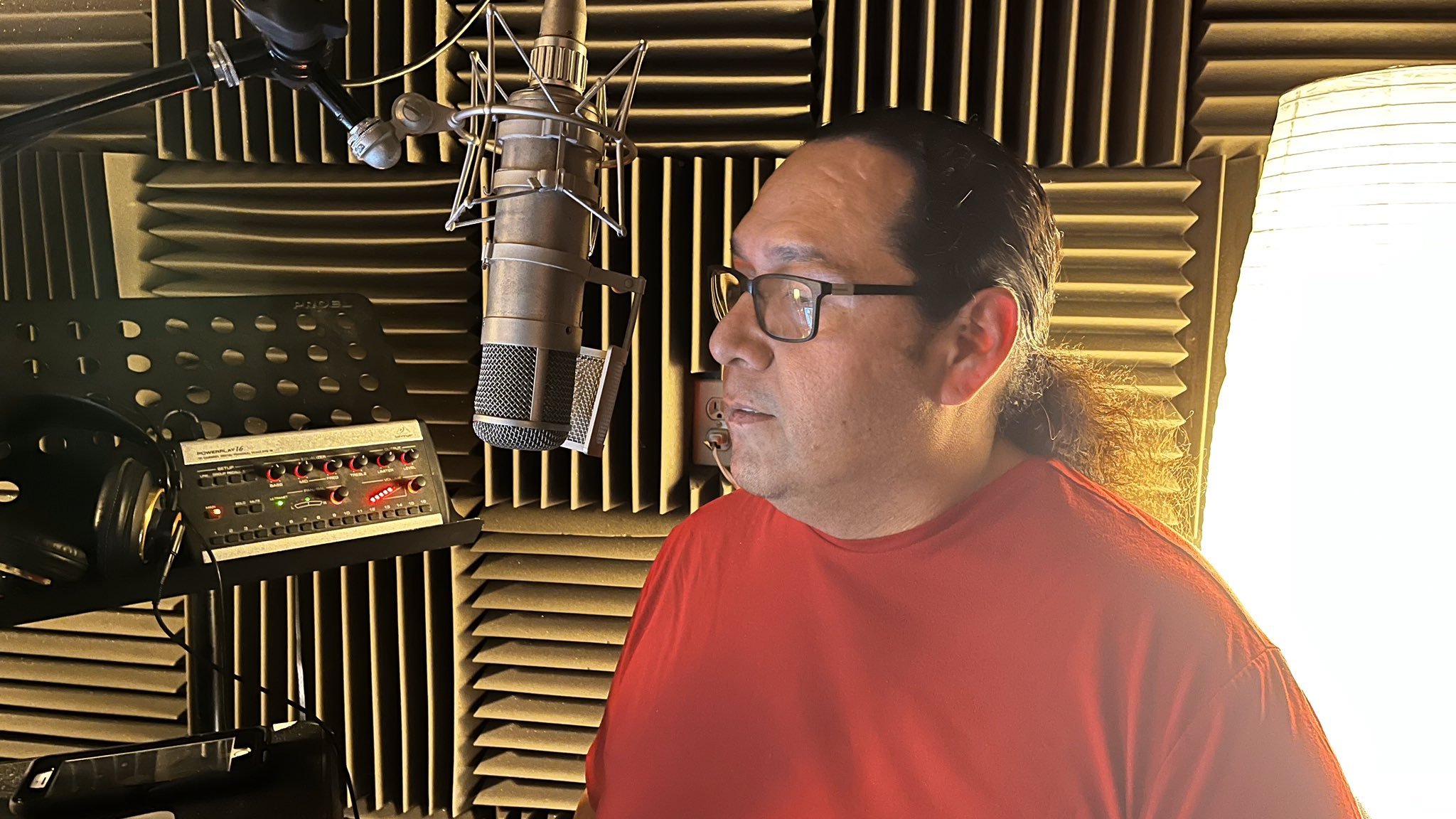
I on the other hand was not so well versed. This was my first time recording anything--much less half a novel. It was fun though. I learned a lot about the world of voice recording. Honestly, I hope I get the chance to do this again. I feel like I caught on quickly. I needed direction at the beginning and the more I recorded the more I caught onto moments when I'd miss a word or add one in.
I was especially interested in capturing the Kiowa and Cherokee inflections in the voices. I've said this before on previous blog posts. While both Kiowa and Cherokee people have Oklahoman accents, there are subtle differences between the two. Kiowa people can almost transform English into a Kiowa-sounding language, whereas Cherokees have a stronger twang to our inflections--a little more singsongy. It was fun being able to move between those subtle dynamics in the two tribal communities I hold so dear.

I have to give a big wado to Blue House Media for coordinating with Hachette Audio/Algonquin Books for these recording sessions. Joel was great, kind, and generous. He quickly took care of any issues and was pleasant company. He made the experience fun and exciting. And of course where would I be without Cameron Potts of John Marshall Media, who directed the entire recording and was an amazing coach, and Laura Essex from Hachette Audio, who oversaw the entire production and gave amazing feedback. I'm feeling very lucky to be a part of such a wonderful and supportive team.
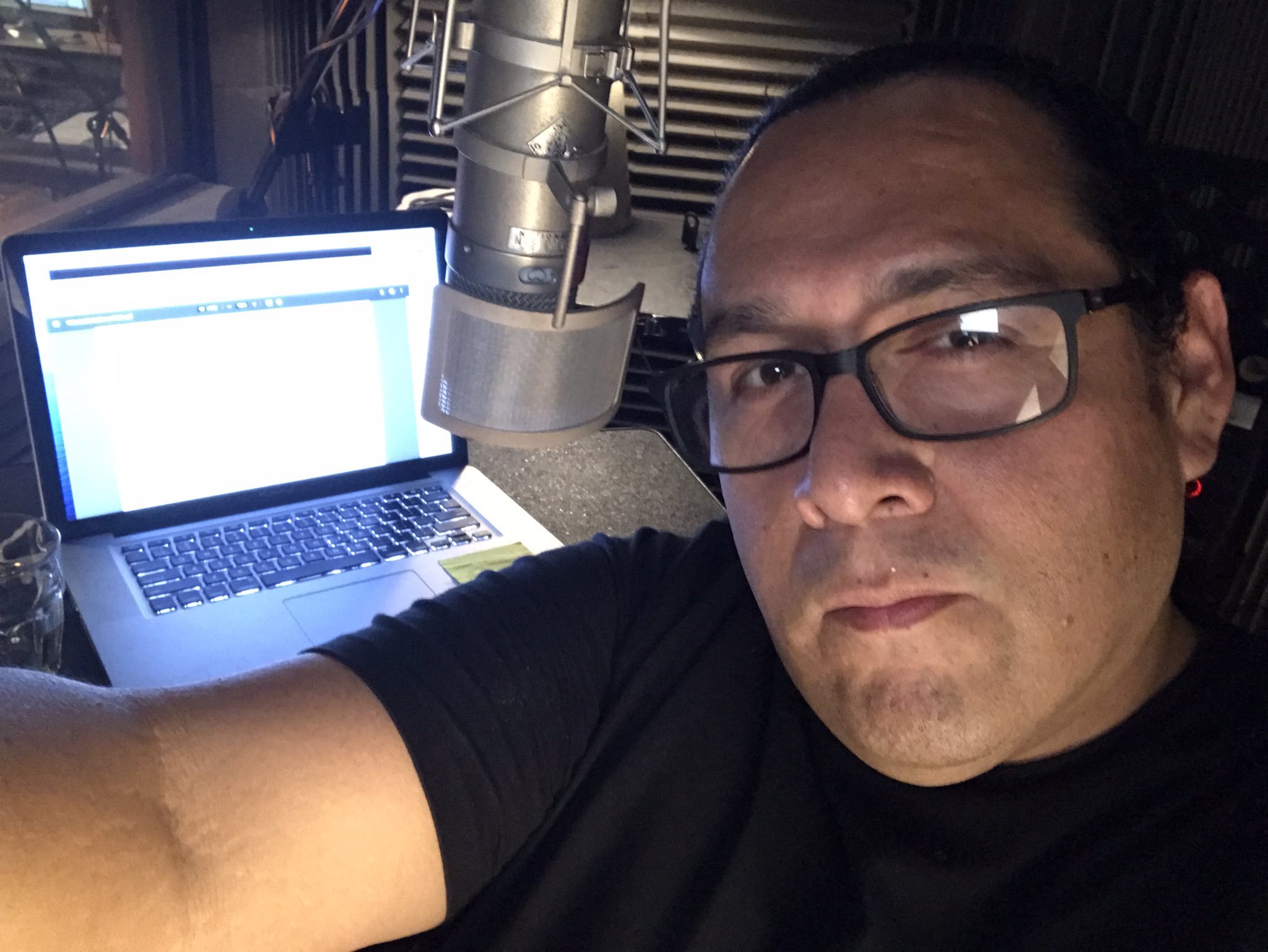
As a Native writer, I was excited to be able to have Native people doing the voices for my audiobook. I'm very grateful Algonquin Books was considerate of this very important cultural dynamic. I'm excited how there are different aspects to the production of the debut novel of which have connected to the three intersecting cultures in my life, Kiowa, Cherokee, and Mexican. While there's always going to be detractors and naysayers (those cliched crabs-in-a-barrel), I'm proud to have been able to connect with artists from both Native and Mexican communities.
The Aftermath of the Final Draft: Novels
So I'm about to use this post as catharsis. I've done something tremendous. So momentous that it's a little unsettling. Or maybe I've made it unsettling by overthinking. But I can't help but wonder if this is a normal part of the process once a writer has submitted the final draft of her novel to an editor.
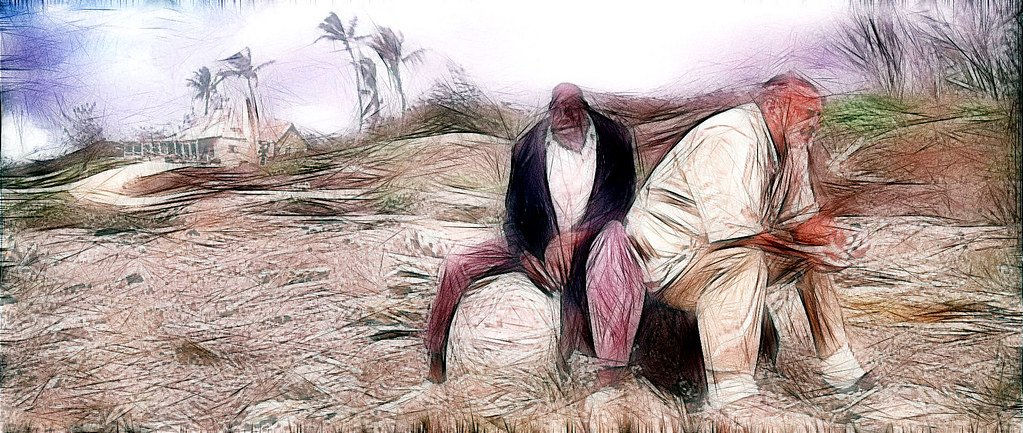
I received edits from my editor a couple months ago, and I immediately went into hiding. All my thoughts were focused on one thing: revise. The closer I came to the deadline, the more intense the focus became. Sure I asked for a couple extension. My book is my baby and I wanted to hold onto it for as long as I could. Then it came to the last extension. The book needed to move toward production, and I had squeezed out every possible moment.
“There is a ruthlessness to the creative act. It often involves a betrayal of the status quo.” ― Alan Watt
Then on Tuesday morning it happened. It was the first day of June. The year was 2021. Just after Labor Day weekend. Rain had been falling off and on for days. Tahlequah, Oklahoma had just left behind it's harshest storms and true summer sun was within grasp. That morning I woke and said, "I'm ready to let the book go. It's time." I had spent all my mental energy on this day.
Fast forward about two hours, I typed a short note in an email, clicked attach, and then the last step: send. It was done. The final manuscript shot into cyberspace and landed inside the inbox of my editor and agent. Congratulatory emails returned. My final draft was officially submitted.
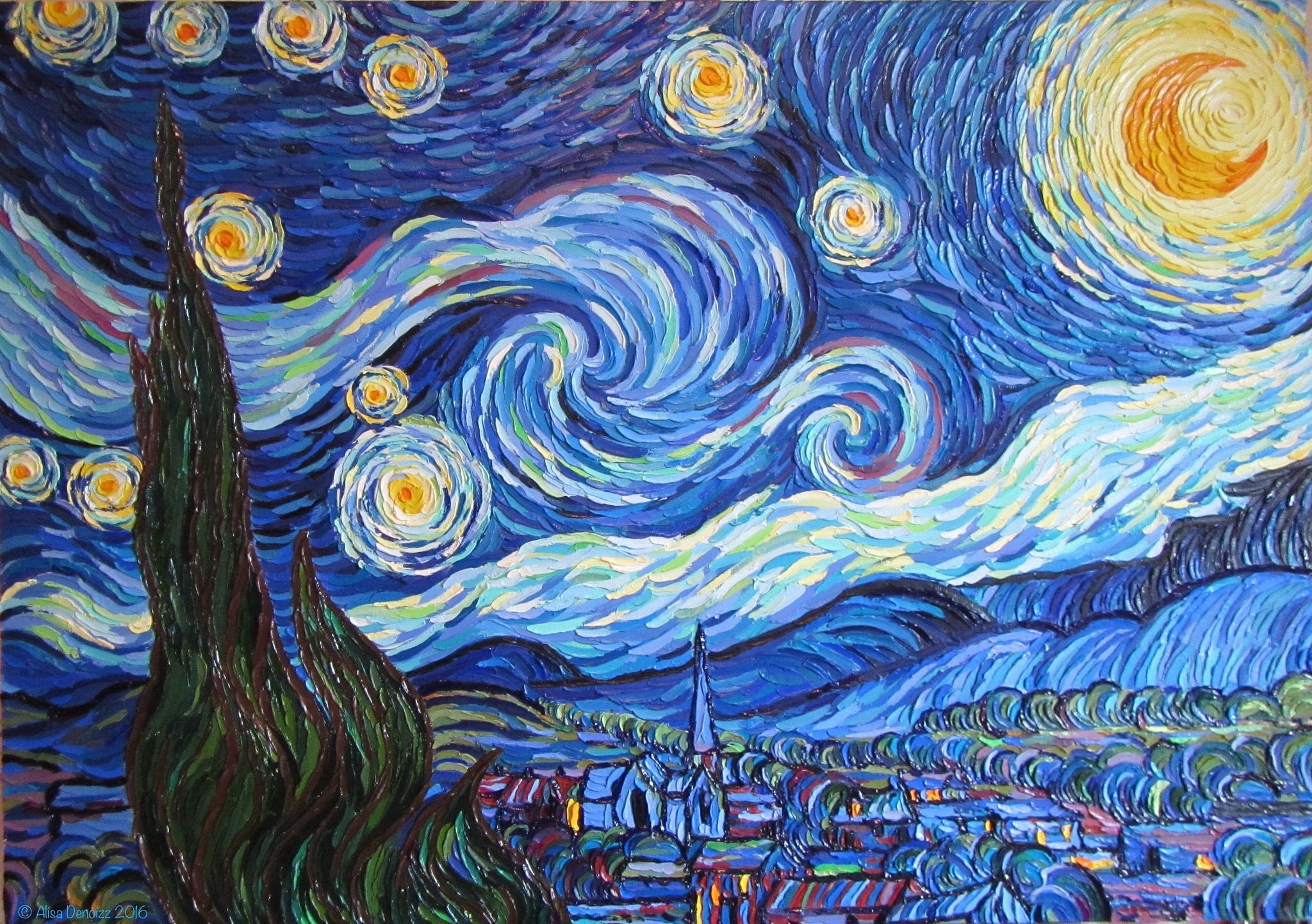
What happened next was a complete shock. I thought I'd be relieved and excited and would run around the office giving everyone high fives and people would take me out for a meal and some drinks and I'd fly in a jet to Peru and dine with elite writers from multiple hemispheres. But no. That did not happen.
What did happen? I was instantly depressed. I was suddenly sad. I was oddly withdrawn.
I thought, What's going on with me? This can't be normal.
“Writing is a struggle against silence.” ― Carlos Fuentes
I had spent so much time focused on the revisions and the moment I'd click send that I had not even thought about what was to come afterwards.
The only thing I can equate it to is the same feeling I had when my three adult children moved out. Like the time when my oldest son and I had breakfast one day. An innocent enough meal. But it was the first meal we had together where he'd leave in his car to his apartment and I'd leave in my car to go to my home. He wasn't coming home with me. He was no longer a child, and what we once had would never be the same again.
I suddenly realized I was mourning the loss of my book. I'd never delve into its pages the same way again. I'd reread the pages at some point in the future, but it'd never be the same. I no longer had anymore influence on it's words, it's chapters, it's characters. Now they had to do everything thing on their own.
This was the moment I realized why I kept asking for extensions. Certainly, there were tweaks to be made, but I couldn't deny there was this sense of trying to hold on, trying to have one more moment, one more memory before it all changed. Even if I didn't consciously realize it. I was holding on as long as I could.
It's scary when your child steps into the big, bright world. There are so many obstacles and pitfalls. But you can't be there for everything. To a certain extent, your baby needs to make mistakes--no matter how young you perceive him to be.
“Some part of me knew from the first that what I wanted was not reality but myth.” ― Stephen King
I've been working on this novel for a very long time. The oldest story in the novel was written in 2008. That's 14 years ago! By the time my book hits the market, it'll have been 15 years from the moment the oldest story was written. It took one and a half decades for this novel-in-stories to reach maturity. That in itself is a unique story to share.
But I have to move forward. I've popped open my other two novels and added a sentence in one, reread a few pages in the other, and stared at the line of chapters running down my flash drive. I want to be ready to move forward. But I might have to give myself a little more time. I thought this post was going to be my release point. But now I'm suddenly realizing that I'm still trying to hold on a moment longer.
Self-Imposed Crippling Frustration Under a Wave of Social Justice Advocacy
It was Saturday night when I knew I'd smudge myself and my house with sage the next day. There had been a build up. With the media exposure of police shootings and the new energy for social justice as a response, I was caught up in the energy. But not without personal justification. Under Trump's toxic atmosphere, my beloved Cherokee community quickly became as divisive as the rest of America.

I started to hear comments that I hadn't heard before, and this time from the mouths of racially white Cherokees. What happened? Why were dark skinned and full blood Cherokees so viscerally hated? And all of a sudden?
Well, it wasn't all of a sudden. This divide between full-blood, half-blood, and racially white has been a part of Native communities for a long time. We can go back as far as the initial reservation era of the 1800s. Take Quanah Parker (Comanche) for example, who is depicted in the image above. He was half white and half Comanche. While the Comanche people did not elect Quanah as their spokesperson, the U.S. government made it clear to the tribe that Quanah would be the only person they were going to deal with. So the Comanche chiefs who were elected inside the community were ignored, while Quanah was selected by those in power.
Why do Natives only gain access when we display an allegiance to white supremacy?
It's unfortunate how we can't overcome this history, where race determines power, as opposed to ability, talent, and strength. Ta-Nehisi Coates writes, “But race is the child of racism, not the father.” And we've heard since the 1990s that "race is a social construct." But then again, everything humans do is a social construct, and this particular construct has murdered millions, enslaved millions, and continues to oppress millions today.
So why was I hearing comments? Why were decisions being made that had full blood Cherokees scrambling? All of a sudden I was reminded of my teen years growing up in Tahlequah, when Cherokees were murdered for being Cherokee, when Cherokees talked about the underground culture in hushed tones, and when Cherokees all too often contorted ourselves under the boot heels of white supremacy.
Then as an adult I moved away for a decade.
When I returned to Tahlequah in 2015 I found a very different Cherokee Nation. There were liberal white Cherokees displaying themselves as allies to "identifiable" Cherokees. There was more willingness to engage and the blatant racism that I once encountered had seemed to disappear.
Then Trump was elected.
Slowly there was an erosion. I started to hear more and more underhanded comments about "identifiable" Cherokees, which is a new white supremacist term for targeting anyone who has traditional Cherokee phenotypes: Dark skin, high cheek bones, strong jawlines, narrow eyes. More and more of my racially white peers would say "Indian this" and "Indian that," and I'd think to myself, "I thought you were Indian." But according to the UNSPOKEN racial line, they were not Indian like "identifiable" Indians. Racially white Cherokees were somehow superior. This language grew and grew over the last four years until it reached a point recently where racially white Cherokees were blatantly and openly talking about "Drunk Indians" and how "identifiable" Cherokees were criminals. The tone was etched with superiority, leaving dark skinned and full blood Cherokees feeling like we had no power, like we were being targeted. And you have to understand, the majority of enrolled Cherokees are racially white. It's not a spectrum, not even close. Those of us who live and work here know the truth. "Identifiable" Cherokees are the minority. Cherokee Nation's racial makeup is identical to the U.S. The darker your skin, the harder your life.
I watched full bloods in my circles cower and back down when racist comments were made. Completely silenced. And half-bloods who have a full-blood parent biting their tongues. Some of us have spoken up, but it doesn't come without feeling like we're going to receive retaliation, retaliation for asking people to not say "drunk Indian." Can you believe that? Basic human decency. It's frustrating that we have to beg to be treated like people. It's frustrating that I have to remind folks that we're human beings. Why is it so extreme to have respect reciprocated? Why would I have to say, "I can't breathe," when it should be obvious that racism is a social choke hold?
I started writing this post wanting to write about how I needed to let go of the frustration, how maybe it was crippling me to think about it. More or less, blaming myself. But now? I wonder if racially white Cherokees ever think about crippling their own supposed brothers and sisters? That's what we're supposed to be, right? Brothers and sisters? We all come from "One Fire," right? If so, why do they make comments like their not Native? Why do they limit how many dark skinned Natives get positions of power? Why do they fear dark skin so much that they'll have just one or two "tokens" to keep in their back pockets? If we all come from "One Fire," why did I have to write this fucking post?
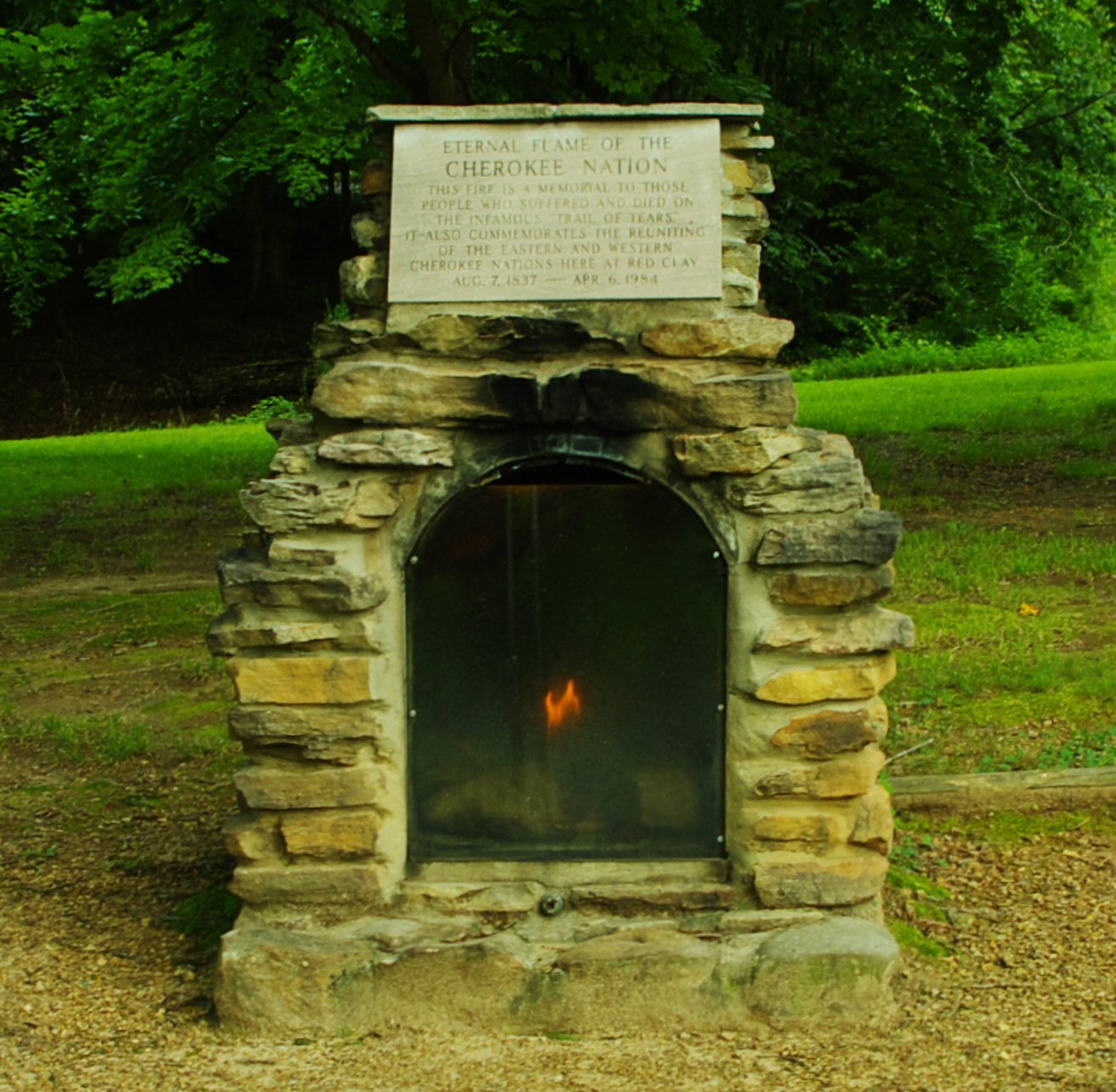
(Images were borrowed from commons wikipedia)
Mexican Indian: The Shifting Indigenous Identity of Turtle Island
Call it evolution or enlightenment. Our perspective is broadening. Where we once only had the capacity to see ourselves in strict hyper local terms, now we can access the universal. In fact, both the universal and the hyper local are needed as checks and balances. In the narrow reaches of our identity, people are quick to lock themselves into violent identities--those in need of contention to exist, to be relevant, to matter. It takes a little dialectical thinking to incorporate a universal identity, where we have the intellectual capacity to, simultaneously, know how we are all connected.

Let me give you a little context and my personal ethos.
My father was an immigrant from Chihuahua, Mexico. My mother is a full blood Kiowa/Cherokee from Oklahoma, United States. I am a product of intertribal, multicultural, transnational, and hyper local tribal histories. Oklahoma was once known as Indian Territory and became the world's largest Prisoner of War camp. Chihuahua was once home to 200 tribes before Spanish conquistadors committed genocide to mine silver from the region's mountains.
When I look south of the American border, I remember being five years old and running into the Chihuahua mountains with my cousins to shoot homemade slingshots. I also remember the Indigenous phenotypes of Indigenous ancestors in my cousin's faces. Having been raised in Oklahoma primarily with my Kiowa and Cherokee people, my perspective has always been an Indigenous one--even before I knew the meaning of the word. I rightly assumed all my cousins in Mexico were Indigenous like myself, since we had the same brown skin, narrow eyes, and black hair. The truth expounded by innocence is always convoluted by fragile adults seeking power over people.
The Náhuatl Language in México: http://www.houstonculture.org/mexico/nahuatl.html
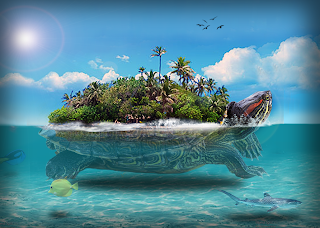
I grew up attending traditional powwows with Kiowa and Comanche people in southern Oklahoma, dancing with my family, wearing bright regalia made by my mother's and aunt's hands. In my youth, we "lived" at the powwow grounds for days at a time. Camping in a tent was as common as sleeping in my bed. While I was one of a few Kiowas with Mexican heritage, we all had the same phenotypes. I didn't look any different from my family, and certainly wasn't treated differently.
Because in my youth I had experiences in Chihuahua, Mexico and experiences in Oklahoma, United States, as an adult the border between Mexico and the U.S. seems arbitrary. Drawn by power seekers and maintained, physically and psychologically, to keep Indigenous people from acknowledging our commonality. Which begs the question, why are colonizers so afraid of Indigenous people allying with each other across Turtle Island?
I'm reminded of the various tribal confederacies in North America who once attempted to unify Indigenous people, and the most famous in the U.S. was Tecumseh's Confederacy (Chief Tecumseh Urges Native Americans to Unite), which ultimately lead to siding with European allies in the struggle for retaining control of traditional lands. Similarly, there were alliances on the Southern Plains of North America, where Kiowas allied with Comanches and held back westward expansion for 100 years (Oklahoma Historical Society). Once they extended their alliance to include the Cheyenne and Arapaho tribes, a confederacy of Indigenous tribes dominated the Southern Plains of North America.
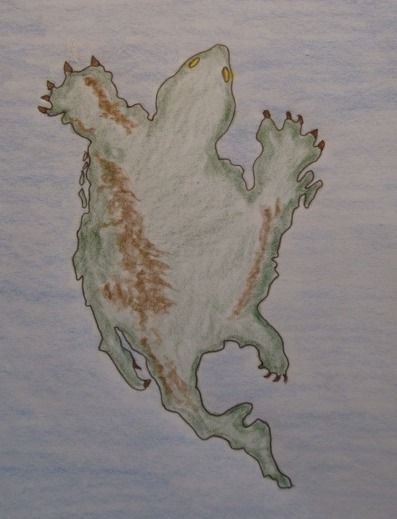
Needless to say, the circumstances that drove Indigenous people in the past are radically different than our need to unify today. Where land base was a primary mode of those alliances, today we are tasked with protecting not only a way of life but more importantly how that way of life is inextricably tied to land based practices. Moreover, to stand against the contamination of earth, air, and water--the three elements needed for human survival. Our plight to unify isn't strictly for the benefit of Indigenous peoples, but for all people to survive and live healthy lives. The environmental war being waged against Indigenous people in Canada is the same war being waged against Indigenous people in Mexico. Whether we're looking north or south, we, as Indigenous people in the United States, have allies in both directions. Why would we limit ourselves to myopic, hyper local identities? Because of a language barrier? Our ancestors developed sign languages to navigate dozens of tribal languages. So we can't beat one colonial language? We're as smart as our ancestors and have the intelligence to know how outdated people lock themselves into identities based in violence. We're smart enough to unfollow and unfriend and silence those seeking to keep Indigenous people from unifying. Outdated practices will only serve to keep Indigenous people fighting with each other, where neo-tribal politics can see the unifying history--how Native people were not only forced to flee into Canada, but to also flee into Mexico.
And now it's time for a return.
(Images were borrowed from The Canadian Encyclopedia, Pinterest, and Facebook.)
The 12 Year Journey of Unsettled Between
I spend a lot of time thinking about love, and what I'm about to discuss here is in the vein of love. But a love for cohesiveness, a love that desires modalities in cooperation rather than competition. Certainly, it took the very pessimistic concepts around Baudrillard's philosophy to engender my thoughts on this subject. But without Baudrillard I would've never reached this conclusive ending: competition is a mere copy of a copy. I hear you asking "So then what's the original source?" My answer: inspiration.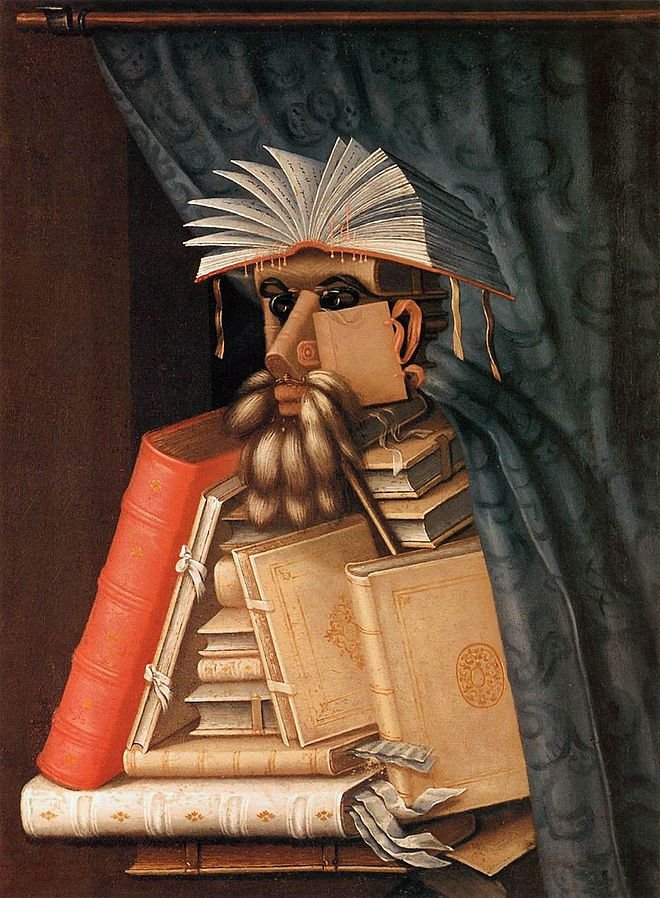 I've spent the last 14 months adding to and then revising a novel. It jumped from approximately 30,000 words to 73,000 words inside of a few short months. Then came all the revisions. I dove into each story and read and reread sentence after sentence, smoothing out the edges and slicing deeper details. Unsettled Between has changed dramatically and in the most beautiful ways. The thematic concept is much cleaner. The stories are further developed. The characters have richer personalities--all the characters--whether static or dynamic. And how was I able to alter a few stories into a full length novel? Inspiration.I'm going to be real honest here. Before I found representation for my novel, I had lost a great deal of inspiration. As many writers can in the ups and downs of life. I had written a couple of the stories in Unsettled Between from 2008 to 2010. They were published in journals ("Our Day" in American Short Fiction and "Time Like Masks" in South Dakota Review"). It was enough to give me a surge of inspiration. Success, even modest success, can give a writer enough fuel to burn for a full length novel.I sent one of the stories to Oxford American, which is a journal I dream of getting published with, and the editor turned it down but he wrote a little note in the corner saying something to effect of "Please submit more fiction in the future. I enjoyed your story," and this little note gave me additional inspiration to continue. So I completed a few more stories, and then a few more, and soon I had enough stories to call this a novel. But it was weak. It needed a lot of development.
I've spent the last 14 months adding to and then revising a novel. It jumped from approximately 30,000 words to 73,000 words inside of a few short months. Then came all the revisions. I dove into each story and read and reread sentence after sentence, smoothing out the edges and slicing deeper details. Unsettled Between has changed dramatically and in the most beautiful ways. The thematic concept is much cleaner. The stories are further developed. The characters have richer personalities--all the characters--whether static or dynamic. And how was I able to alter a few stories into a full length novel? Inspiration.I'm going to be real honest here. Before I found representation for my novel, I had lost a great deal of inspiration. As many writers can in the ups and downs of life. I had written a couple of the stories in Unsettled Between from 2008 to 2010. They were published in journals ("Our Day" in American Short Fiction and "Time Like Masks" in South Dakota Review"). It was enough to give me a surge of inspiration. Success, even modest success, can give a writer enough fuel to burn for a full length novel.I sent one of the stories to Oxford American, which is a journal I dream of getting published with, and the editor turned it down but he wrote a little note in the corner saying something to effect of "Please submit more fiction in the future. I enjoyed your story," and this little note gave me additional inspiration to continue. So I completed a few more stories, and then a few more, and soon I had enough stories to call this a novel. But it was weak. It needed a lot of development. 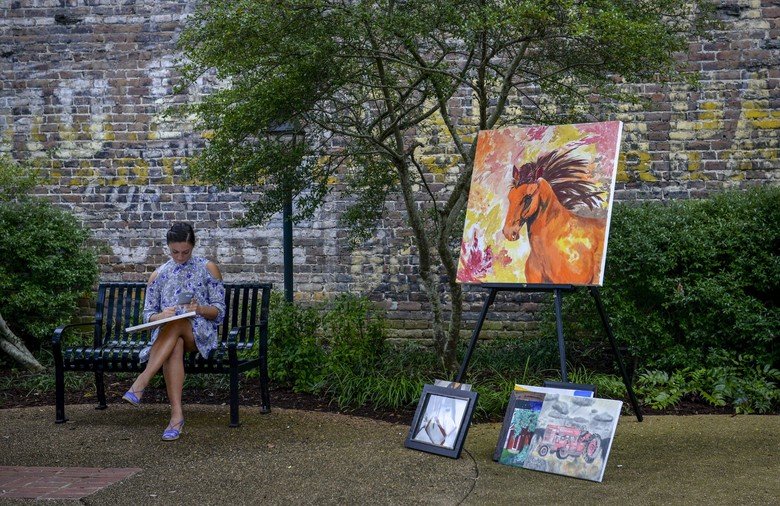 It was 2012 and I wanted some type of success. I needed inspiration. I knew if I could get someone to grab onto my book I'd have renewed energy. So I started sending out queries and got a request for a partial but the agent never even gave me a "No, thank you." The request came quickly in my querying process so I stopped sending out queries, which turned out to be a mistake. The agent never returned my email. And I emailed a few times asking for updates. But nothing. I was young in my career and took this as a defeat. In hindsight, I should've just kept querying. I hadn't submitted to very many agents. But I was naive and new to the game. I was defeated, or felt defeated, like maybe giving up was the only option. Soon I stopped carrying around my laptop and I forgot about the flash drives.A few years passed. I got divorced. Moved back to Oklahoma. Started raising my kids as a single parent. Life swept in like a tornado and carried me into a version of myself I didn't recognize.
It was 2012 and I wanted some type of success. I needed inspiration. I knew if I could get someone to grab onto my book I'd have renewed energy. So I started sending out queries and got a request for a partial but the agent never even gave me a "No, thank you." The request came quickly in my querying process so I stopped sending out queries, which turned out to be a mistake. The agent never returned my email. And I emailed a few times asking for updates. But nothing. I was young in my career and took this as a defeat. In hindsight, I should've just kept querying. I hadn't submitted to very many agents. But I was naive and new to the game. I was defeated, or felt defeated, like maybe giving up was the only option. Soon I stopped carrying around my laptop and I forgot about the flash drives.A few years passed. I got divorced. Moved back to Oklahoma. Started raising my kids as a single parent. Life swept in like a tornado and carried me into a version of myself I didn't recognize.
“When I sit down to write a book, I do not say to myself, ‘I am going to produce a work of art.’ I write it because there is some lie that I want to expose, some fact to which I want to draw attention, and my initial concern is to get a hearing.” — George Orwell
Then in 2015, I got this idea for a novel. Not the collection of stories I had written. Those stories I couldn't even look at. In fact, I couldn't even slide the flash drive with those stories into a USB. There was something psychological keeping me from going back. I told myself I needed to move forward. Keep thinking positive. So I wrote another novel, Uncle Called Him Spider. You can find posts on this blog where I work out kinks in the storyline. But this new idea was enough to get me believing I was a writer again. 60,000 words later. I had no doubt.So being in awe of my accomplishment. Writing 60,000 words is heavy lifting and it took me about six months to complete the first draft. Then I started the revisions and deepening the novel. After a year I had a solid "draft" of Uncle Called Him Spider. It was solid enough to call a draft and had interlaced subplots with protagonist and antagonist battling for top spot in a very esoteric field. It was different. I hadn't read a novel like it before so it left me feeling good about my hard work.
“There are no laws for the novel. There never have been, nor can there ever be.” — Doris Lessing
So late 2017 and early 2018, I start thinking about those stories. I'm like, "Maybe I should try to reread a few of them." Then a friend asked if I was working on any fiction. I told him about the new novel, but in the back of my mind I thought about those stories. His very considerate and thoughtful question was a springboard. Suddenly, I started thinking about the collection of stories again.I decided to try to slide a "certain" flash drive into a USB. And it worked. After reading the collection, I suddenly had a new vision for the book. So most of the stories were booted. They either didn't fit into this new concept or I felt like they just weren't good enough. So I wrote new stories. Then I polished them to a point where they were more than solid. They were ready to be published in journals. But my earlier defeat left me too frail to consider putting myself on the line. I couldn't handle the rejection, or the repeated rejection. Maybe one or two. But the dozens it can take to get a story published was going to be too much.
“If it sounds like writing, I rewrite it.” — Elmore Leonard
Then I heard of this event on Twitter. It was called #Dvpit (Diverse Voice Pitch) event. It was a simple but brilliant concept. You developed a twitter sized pitch of your novel. On the day of the event, you post the tweet. If an agent clicks on the heart icon, then you send them their requested material. I thought, this isn't nearly as brutal as the traditional querying process. I told myself, "It's a one time pitch," as opposed to the numerous I was visualizing. More importantly, it avoided the numerous rejections. Plus, it was new, different, and I got a little excited about it. So I marked it on my calendar and wrote a pitch. I polished over several weeks, reading and rereading until it was tight and succinct.I was surprised when multiple agents from large literary agencies started clicking on my tweet. What I liked most was how this pitching event gave me a sense that I was on the right track. It gave me inspiration. Long story short, I landed an agent. I couldn't believe my luck. The excitement carried over into the revision process. I was so beyond inspired that when my agent asked me to more than double the novel, I did so in a few short months. It almost felt easy. Likely because I was inspired by the success of working with an agent and speaking with someone who cared as much about my novel as I did.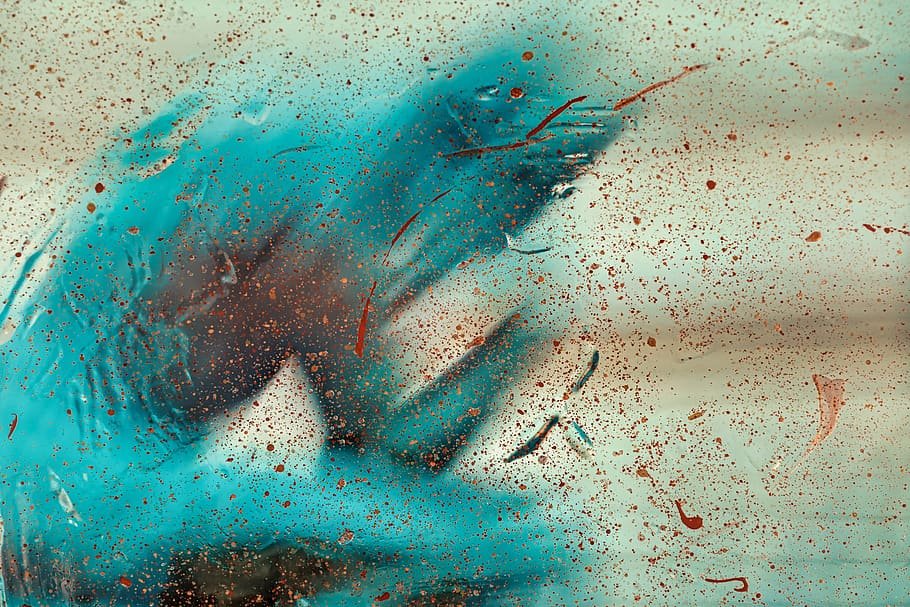 I can't tell you how lucky I am to be working with my agent, Allie Levick. I highly recommend querying her if you have a full manuscript to offer. As I reflect back on the last 14 months, she has asked me to look at specific pieces of the story in new ways. She's very hands on with the development and cares a lot about her work. I have high standards when it comes to professionalism. Allie carries herself as a true professional and I highly respect her opinion. A good agent will offer creative feedback, but one steeped in the rigors of her profession will inspire.So over the last few weeks, as I disappeared into revision work, I've thought a lot about things, like Baudrillard and love, cohesion and cooperation. I've seen people using "competition" to work themselves up. But I find inspiration to be the most impacting on art and life. In fact, from the competitiveness I've witnessed, I can see how inspired people energize themselves and the uninspired feed off the inspiration of others. Competition is only a fading copy of inspiration. Personally, I simply seek out inspiration or wait for it and trust it'll find its way toward me. Then once my spirit has risen with its power, I hold onto it as long as I can.
I can't tell you how lucky I am to be working with my agent, Allie Levick. I highly recommend querying her if you have a full manuscript to offer. As I reflect back on the last 14 months, she has asked me to look at specific pieces of the story in new ways. She's very hands on with the development and cares a lot about her work. I have high standards when it comes to professionalism. Allie carries herself as a true professional and I highly respect her opinion. A good agent will offer creative feedback, but one steeped in the rigors of her profession will inspire.So over the last few weeks, as I disappeared into revision work, I've thought a lot about things, like Baudrillard and love, cohesion and cooperation. I've seen people using "competition" to work themselves up. But I find inspiration to be the most impacting on art and life. In fact, from the competitiveness I've witnessed, I can see how inspired people energize themselves and the uninspired feed off the inspiration of others. Competition is only a fading copy of inspiration. Personally, I simply seek out inspiration or wait for it and trust it'll find its way toward me. Then once my spirit has risen with its power, I hold onto it as long as I can.
Support a Native owned Etsy shop, Allies United, where I offer unique merch for allies of social justice movements, like MMIW, Native Lives Matter and Black Lives Matter. Take a look inside my Etsy shop here: etsy.com/shop/AlliesUnited.
(Images were borrowed from wikipedia, columbus,af.mil, and pxfuel)
How to Smudge with Sage & Native American Customs for Prayer
I've had several people inquire about practices and customs associated with smudging. I decided to cleanse myself today so I thought I'd make a short video on rituals I've learned over the years. This is by no means anything dogmatic. These are just methods that I've learned over the years. I'm Kiowa and Cherokee, and I've incorporated practices between both cultures and lessons I've learned personally through doing this routinely that work for me.I hope you enjoy the video. Please feel free to share with as many folks as you like, and if you have questions reach out to me in the comments. Wa'do, have a blessed day, and if you're interested in Native American fiction please support my debut novel, CALLING FOR A BLANKET DANCE: Bookshop, Amazon, B&N, IndieBound.https://www.youtube.com/watch?v=Z3GGFIfJY0Q
The Crocodile, the Goat, and the Unicorn: Unique Approaches to Character Development by Unifying Karpman's Drama Triangle, Evolutionary Astrology, and Stanislavski's Method Acting
There I am, like you, and so many writers, sitting at my computer and starting a new writing project. I'm drawing up characters because this story has been running through mind for years and it's finally ready to go onto a page. Since I already have a working idea of who my main character is and her antagonist, I now need to weigh her against Karpman's drama triangle. What is her good, bad, and ugly? This is how I've drawn multidimensional characters for over 10 years. But then two other creative forms changed my approach: Evolutionary astrology and Stanislavski's method acting.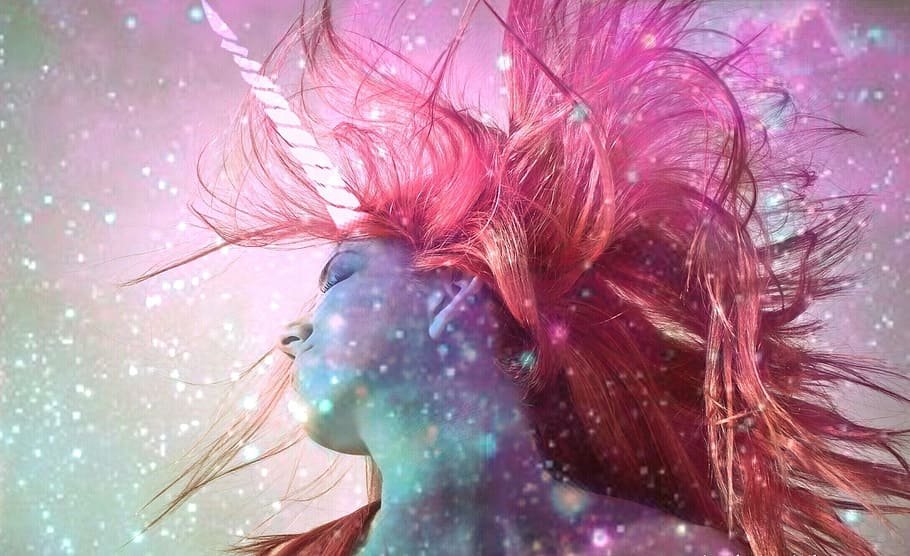 Those of you who have been following my blog for some time know that I'm a capricorn and if you follow my Twitter as well you'll see posts from time to time about being capricorn. I've followed astrology closely for about two years. I'm writing a character for another novel, or another novel that's rolling around in my mind right now, and astrology started as research for that character. Then I started to become more and more intrigued by it.So I'm a capricorn rising, capricorn sun, and libra moon in Western astrology, which is also called evolutionary astrology, and commonly practiced in North America and Europe. In Vedic astrology, which is the most commonly used form in Asia, I'm a capricorn rising, sagittarius sun, and virgo moon, with my moon nakshatra in uttra phalguni. If you follow astrology closely, you'll know what each of those mean, but if you don't it's how the stars were aligned the moment I was born and determines my personality, my ambitions, and my obstacles.So in both forms of astrology, I'm a capricorn, which isn't always the case because each measures birth timeframes differently. I'll not go into those details. But being a capricorn has always resonated with me.
Those of you who have been following my blog for some time know that I'm a capricorn and if you follow my Twitter as well you'll see posts from time to time about being capricorn. I've followed astrology closely for about two years. I'm writing a character for another novel, or another novel that's rolling around in my mind right now, and astrology started as research for that character. Then I started to become more and more intrigued by it.So I'm a capricorn rising, capricorn sun, and libra moon in Western astrology, which is also called evolutionary astrology, and commonly practiced in North America and Europe. In Vedic astrology, which is the most commonly used form in Asia, I'm a capricorn rising, sagittarius sun, and virgo moon, with my moon nakshatra in uttra phalguni. If you follow astrology closely, you'll know what each of those mean, but if you don't it's how the stars were aligned the moment I was born and determines my personality, my ambitions, and my obstacles.So in both forms of astrology, I'm a capricorn, which isn't always the case because each measures birth timeframes differently. I'll not go into those details. But being a capricorn has always resonated with me.
"In the end, you will find yourself with a long list of accomplishments and overcomes challenges that will mark your name, and these things you have done should bring you joy in the later years of your life because you decided that you would never quit." -- Bellatuscana
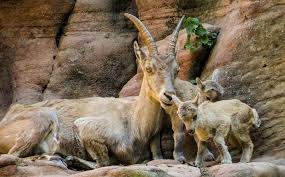 For most of the last two years, I had been only aware of the capricorn sign symbolized by a climbing mountain goat. Then as I went deeper into researching astrology I discovered ancient astrology also symbolized the sign with a crocodile and a unicorn. So the cycle goes like this: the sign starts as a crocodile moves into a goat and then ends as a unicorn. So in it's lowest form, capricorns had strong crocodilian traits and were once viewed singularly as this reptile. Then at some point in human history, capricorn people evolved and started to act more like the mountain goat or a mythological sea goat. This is how the sign is currently symbolized. And so in the future, capricorn people, in their highest form of evolution, will start to take on traits of a mythological unicorn. The two horns of the goat fuse and turn into one, which symbolizes the spiritual use of the third eye.So how does all this pertain to Karpman's drama triangle and Stanislavski's method acting?Stephen Karpman developed a victim, rescuer, and persecutor psychotherapy model in 1961 for transactional analysis. In story writing terms, we writers modified this into a model for creating complex characters and applied the terms of victim, hero, and villain. So each character, aside from static characters, should have personality traits showing each of the three. This will reflect on the page as a real person to the reader, because, as Karpman pointed out in his model, people revolve between victim, rescuer, and persecutor in social situations. So if real folks do this, then so should your characters.
For most of the last two years, I had been only aware of the capricorn sign symbolized by a climbing mountain goat. Then as I went deeper into researching astrology I discovered ancient astrology also symbolized the sign with a crocodile and a unicorn. So the cycle goes like this: the sign starts as a crocodile moves into a goat and then ends as a unicorn. So in it's lowest form, capricorns had strong crocodilian traits and were once viewed singularly as this reptile. Then at some point in human history, capricorn people evolved and started to act more like the mountain goat or a mythological sea goat. This is how the sign is currently symbolized. And so in the future, capricorn people, in their highest form of evolution, will start to take on traits of a mythological unicorn. The two horns of the goat fuse and turn into one, which symbolizes the spiritual use of the third eye.So how does all this pertain to Karpman's drama triangle and Stanislavski's method acting?Stephen Karpman developed a victim, rescuer, and persecutor psychotherapy model in 1961 for transactional analysis. In story writing terms, we writers modified this into a model for creating complex characters and applied the terms of victim, hero, and villain. So each character, aside from static characters, should have personality traits showing each of the three. This will reflect on the page as a real person to the reader, because, as Karpman pointed out in his model, people revolve between victim, rescuer, and persecutor in social situations. So if real folks do this, then so should your characters.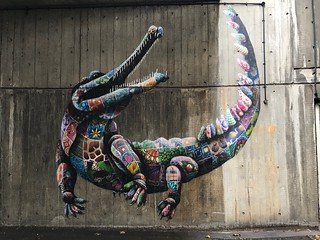 Now in my own writing, I tend to be pretty good about making my main characters into villains. I'm not sure why. Many writers will be protective of their main characters and make them so saintly they don't appear to be real people. I must be real crocodilian in my approach to character development, lol. I tend to want to throw my characters under the bus and have them appear to be unlikable. I am a big fan of the unlikable narrator, so that probably plays a part in it. Because I tend to lean heavily on the villain side of character development, I've used the drama triangle to make sure my characters also play hero and victim. This has saved me on a number of occasions by giving my character multiple dimensions.So there I am learning how capricorn in ancient astrology has these evolutionary patterns, and I'm a writer (the drama triangle is always floating around somewhere in the back of my mind). Suddenly, I think to myself, "What if I applied ancient astrology's approach with capricorn symbols to Karpman's model?" Then the villain becomes the crocodile, and the victim becomes the goat, and the hero becomes the unicorn. I've been gifted, aka cursed, with an overactive mind and imagination (great for storytelling but bad for peace of mind), so I suddenly start thinking in terms of "method acting."
Now in my own writing, I tend to be pretty good about making my main characters into villains. I'm not sure why. Many writers will be protective of their main characters and make them so saintly they don't appear to be real people. I must be real crocodilian in my approach to character development, lol. I tend to want to throw my characters under the bus and have them appear to be unlikable. I am a big fan of the unlikable narrator, so that probably plays a part in it. Because I tend to lean heavily on the villain side of character development, I've used the drama triangle to make sure my characters also play hero and victim. This has saved me on a number of occasions by giving my character multiple dimensions.So there I am learning how capricorn in ancient astrology has these evolutionary patterns, and I'm a writer (the drama triangle is always floating around somewhere in the back of my mind). Suddenly, I think to myself, "What if I applied ancient astrology's approach with capricorn symbols to Karpman's model?" Then the villain becomes the crocodile, and the victim becomes the goat, and the hero becomes the unicorn. I've been gifted, aka cursed, with an overactive mind and imagination (great for storytelling but bad for peace of mind), so I suddenly start thinking in terms of "method acting."
“Our demands are simple, normal, and therefore they are difficult to satisfy. All we ask is that an actor on the stage live in accordance with natural laws.” --
Konstantin Stanislavski begun the practice of method acting back in the early 1900s. The basic concept of the form is to "take on" traits of someone else or something else. This could mean an actor studying historical figures to such an intense degree that they "become" the person in behavior and thinking, like Kate Winslet in her portrayal of a former Nazi guard in The Reader. It also can mean an actor use the behavior of an animal to portray a specific depth, like Anthony Hopkins using traits of a lizard for his portrayal of serial killer Hannibal Lecter in The Silence of the Lambs.In the rapidity of an overactive imagination, I put the three together and started to make my drama triangle "character specific." So if my main character in my novel was like a spider in his villainy, then I asked myself: What animal would his victim and hero personas become? Or in astrological terms, what symbols would carry him through an evolutionary arch? If a crocodile can become a goat and then a unicorn, then a spider can become a bird and then a dragon.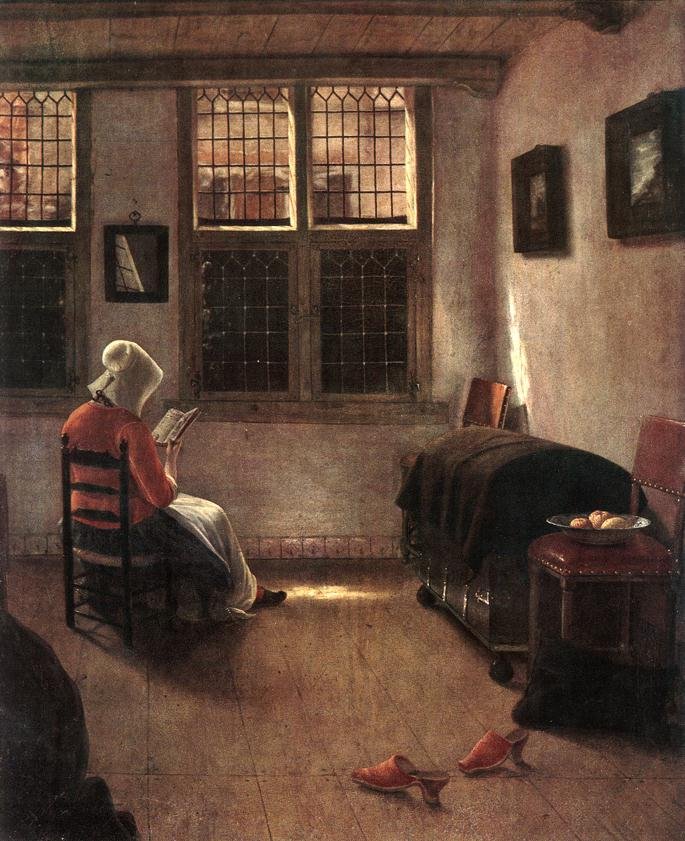 What's important to take away from this exercise is the freedom you obtain by marrying all three of these forms: drama triangle, evolutionary astrology, and method acting. By developing a "character specific" drama triangle, we as writers have a powerful tool to manifest complex characters out of thin air, like magicians mimicking the tools of a god. With the slight of hand, pencil and paper, screen and keyboard, we can hypnotize our audiences to feel as though they are participating in the lives of real people.
What's important to take away from this exercise is the freedom you obtain by marrying all three of these forms: drama triangle, evolutionary astrology, and method acting. By developing a "character specific" drama triangle, we as writers have a powerful tool to manifest complex characters out of thin air, like magicians mimicking the tools of a god. With the slight of hand, pencil and paper, screen and keyboard, we can hypnotize our audiences to feel as though they are participating in the lives of real people.
(Images were borrowed from pxfuel.com, maxpixel.com, flickr, and wikimedia commons)
On Writing an "Indian Child Welfare" Novel & Other Grand Adventures
I hiked into the Grand Canyon. I must've been in my late twenties, maybe early thirties. It started out as a walk to look over the rim. I had camped the night before in a tent at one of the sites and woke early (probably about 5am). I was there with a friend and she was still asleep. As the sun rose out of the east, I decided to follow the paved roads toward the rim of the Grand Canyon.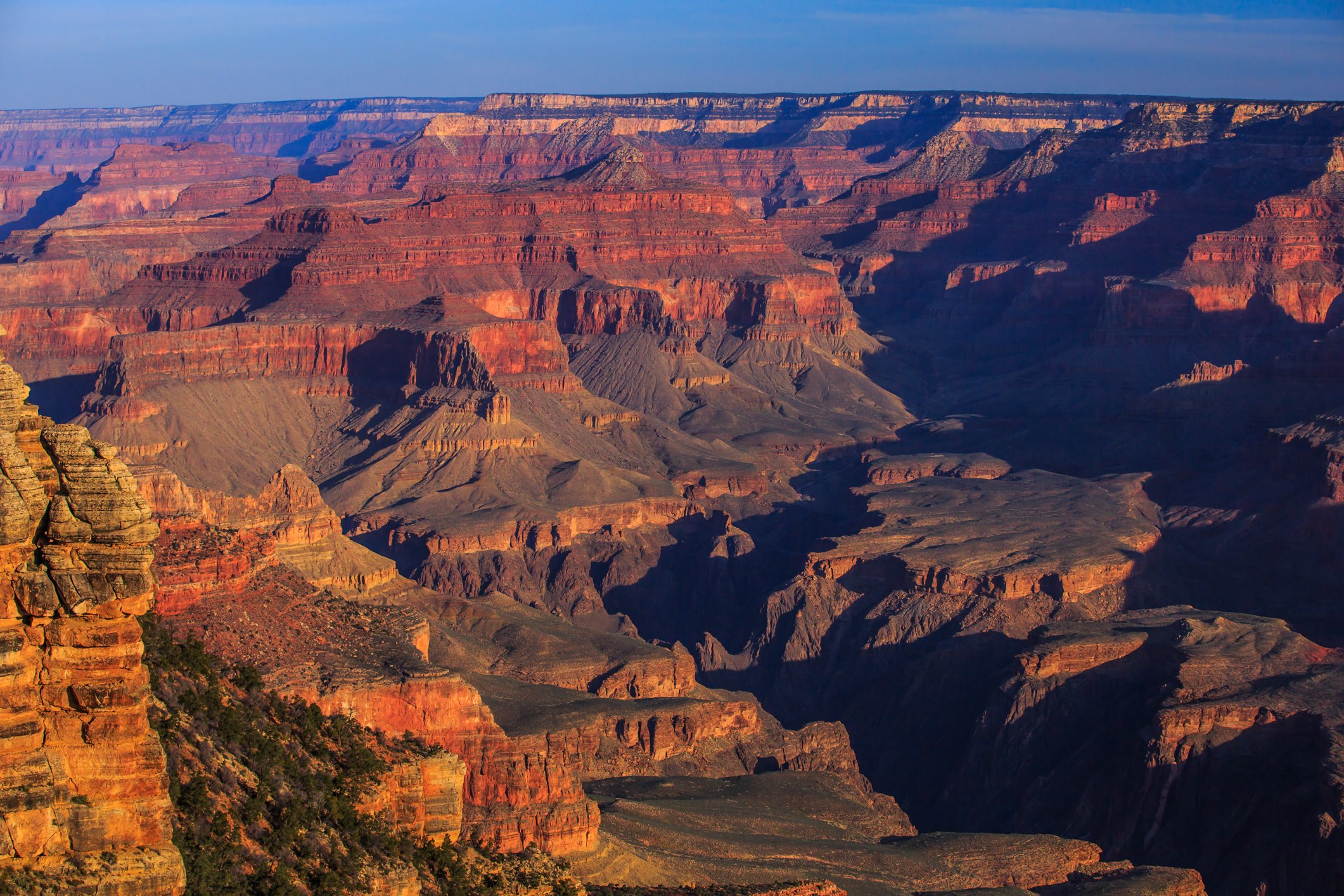 It was nice to be out so early in the morning. No one was around. It felt like the entire world was mine alone. I strolled on the sidewalk lining the edge of the Grand Canyon mesmerized by the depth of the canyon and the streaming sunlight slowing filling it's center. It was beautiful, magical, and most of all peaceful.Then I happened upon an entrance. I didn't expect to find an invitation that day.
It was nice to be out so early in the morning. No one was around. It felt like the entire world was mine alone. I strolled on the sidewalk lining the edge of the Grand Canyon mesmerized by the depth of the canyon and the streaming sunlight slowing filling it's center. It was beautiful, magical, and most of all peaceful.Then I happened upon an entrance. I didn't expect to find an invitation that day.
“You can always edit a bad page. You can't edit a blank page.” ―
Similarly, I find stories as I stroll through my everyday. I'm always vigilant and, after being trained by the Institute of American Indian Arts and the University of Oklahoma, I see every moment as a beginning, middle, and end (a story).I've said this before. I write what I live, and create fiction by moving experiences around, compounding memories, and enhancing the "feeling" of a moment with embellishments. But embellishments can be made into entertainment when delivered as a book-sized package.I have three writing projects at the moment. Those of you who follow my blog likely know about two of those projects. The development of my novel, Uncle Called Him Spider, has been highlighted on this blog, and you can go back and find the collapse and expansion of those words in posts such as Gossip: Weapon of the Weak. It's in full first draft mode. I've revised a little but I've put it on hold. In fact, the reason I put it on hold lead me to another novel, or a novel-in-stories: Unsettled Between.
“A short story I have written long ago would barge into my house in the middle of the night, shake me awake and shout, 'Hey, this is no time for sleeping! You can't forget me, there's still more to write!' Impelled by that voice, I would find myself writing a novel.” ―
Unsettled Between began a decade ago. It's ten years in the making. I wrote one of it's first stories, Our Dance, with the help of instructors and classes at the Institute of American Indian Arts--this was around 2008. It was then published in 2010 with American Short Fiction. Then I developed another of it's stories, Time Like Masks, while completing my Master's Degree at the University of Oklahoma. It was picked up by South Dakota Review in 2011. Now, those stories are two of twelve in my novel, Unsettled Between. I'm proud to say it's rep'd by Allie Levick of Writers House.This brings me to the third project. This one is very recent. I'm calling it my "Indian Child Welfare" novel, as I develop the story-line to completion. As I had with Uncle Called Him Spider, I'll be brainstorming different components of the novel here on my blog. So be sure to click the "follow" button (not to sound too much like a YouTube video). I'm not going to give away much detail on this story. I tend to hold off on full disclosure until the novel has reached fruition. But as you read posts you'll be able to piece together what I'm struggling with, as far as what I need to capture, and where the novel is headed.
“You write about experiences partly to understand what they mean, partly not to lose them to time. To oblivion. But there's always the danger of the opposite happening. Losing the memory of the experience itself to the memory of writing about it.” ―
But I will say this: I've outlined 25 chapters and have developed a full synopsis of the novel at this point. I've worked out details that drive the action. But I've not written the first draft. That's my next step. So be sure to come back and check in. You'll find my frustrations and triumphs listed here. Often my brainstorming sessions show up at odd and unpredictable times. I'll also add: The world of child welfare is not what you think. I've worked for over ten years with at-risk populations and you might believe heroism has a certain purist quality to it, but I'll dispel that for you. I have a cast of characters in this "Indian Child Welfare" novel that'll both affirm and disrupt your belief in how people carry themselves in this field. When I say you'll be shocked, it's not about the obvious things. I don't dabble in the obvious. I advocate to "bare witness" to the unseen. No more secrets. So back to my trek into the Grand Canyon. I hiked halfway down that day. I passed people hiking back up (exhaustion on their faces) and people riding donkeys (scary). It was beautiful watching the morning light grow into full afternoon. At the halfway point, there was a watering station. I filled my water bottle, sat next to other hikers in the shade, and contemplated on how easy it was to climb down.I realized that around four hours had passed and I needed to get back to camp. I hadn't told my companion that I was leaving. She was still asleep. I didn't want to wake her. Besides, I thought I was going on a light walk to the rim and back. Surely, I'd have returned before she woke. Then I ended up halfway down into the Grand Canyon. Needless to say, I drank as much water as my stomach could hold, refilled my water bottle, and started the trek back up.Three steps into climb and I thought, "Oh shit, what did I get myself into?" My legs suddenly grew tight and each step became work. I had used a different set of muscles to cruise down the edges of the canyon. Now I had to use larger muscles to climb up. Long story short, six hours later I finally pulled myself out of the canyon and back to the rim. If not for a kind and generous young man, who walked a good portion of the hike alongside me, maybe it would've take me longer. He was ten years younger and already a good conversationalist. Somehow I made it back to the rim and, by the time I made it back to camp, the sun was starting to set in the west.
So back to my trek into the Grand Canyon. I hiked halfway down that day. I passed people hiking back up (exhaustion on their faces) and people riding donkeys (scary). It was beautiful watching the morning light grow into full afternoon. At the halfway point, there was a watering station. I filled my water bottle, sat next to other hikers in the shade, and contemplated on how easy it was to climb down.I realized that around four hours had passed and I needed to get back to camp. I hadn't told my companion that I was leaving. She was still asleep. I didn't want to wake her. Besides, I thought I was going on a light walk to the rim and back. Surely, I'd have returned before she woke. Then I ended up halfway down into the Grand Canyon. Needless to say, I drank as much water as my stomach could hold, refilled my water bottle, and started the trek back up.Three steps into climb and I thought, "Oh shit, what did I get myself into?" My legs suddenly grew tight and each step became work. I had used a different set of muscles to cruise down the edges of the canyon. Now I had to use larger muscles to climb up. Long story short, six hours later I finally pulled myself out of the canyon and back to the rim. If not for a kind and generous young man, who walked a good portion of the hike alongside me, maybe it would've take me longer. He was ten years younger and already a good conversationalist. Somehow I made it back to the rim and, by the time I made it back to camp, the sun was starting to set in the west.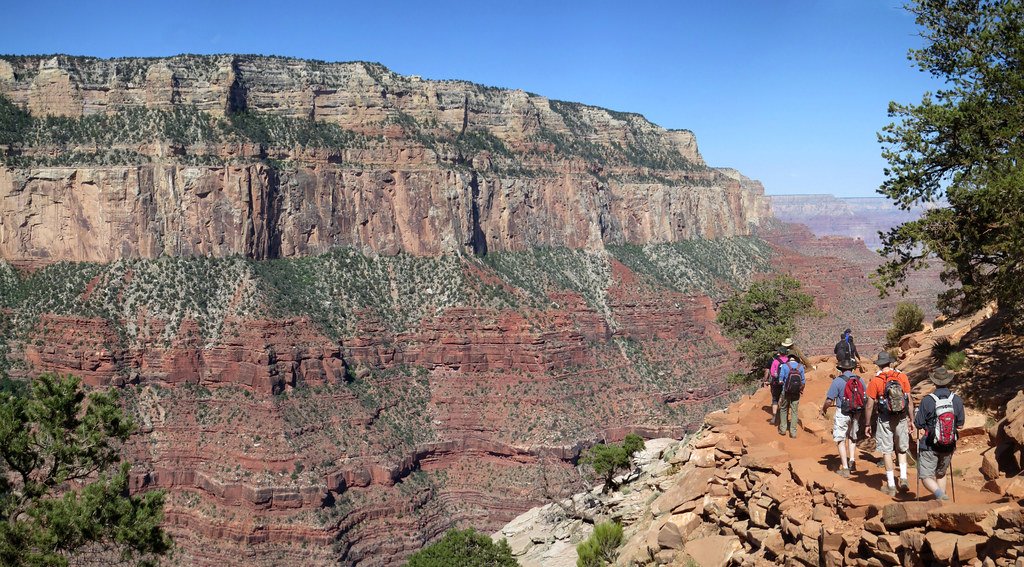 I apologized profusely to my companion, but she was kind about it all and made her own adventures that day. She, an artist herself, knew the flights of fancy we creative types tend to have. To this day, I can find myself on peculiar adventures at a moment's notice. And like novel writing, we stumble upon an entrance and dare ourselves to take the invitation. When we think we've completed the journey, we look up and find our challenge is only halfway complete. So here's to the next few steps.
I apologized profusely to my companion, but she was kind about it all and made her own adventures that day. She, an artist herself, knew the flights of fancy we creative types tend to have. To this day, I can find myself on peculiar adventures at a moment's notice. And like novel writing, we stumble upon an entrance and dare ourselves to take the invitation. When we think we've completed the journey, we look up and find our challenge is only halfway complete. So here's to the next few steps.
(Images were borrowed from flickr, pxhere, and wikipedia)
Novel DNA: How Writing Chapters can Change the World
What to do with a great idea? Let's sit down and map out a novel. Writing in the dark is a popular way of writing short stories. We get an idea. We pull out the laptop. We write until everything is on the page. As we write, we don't know where the story will lead and this suspense and feeling of surprise keeps us writing, it builds adrenaline, and keeps us guessing as we finish a story. But there may need to be a different approach when it comes to a 25 chapter novel.
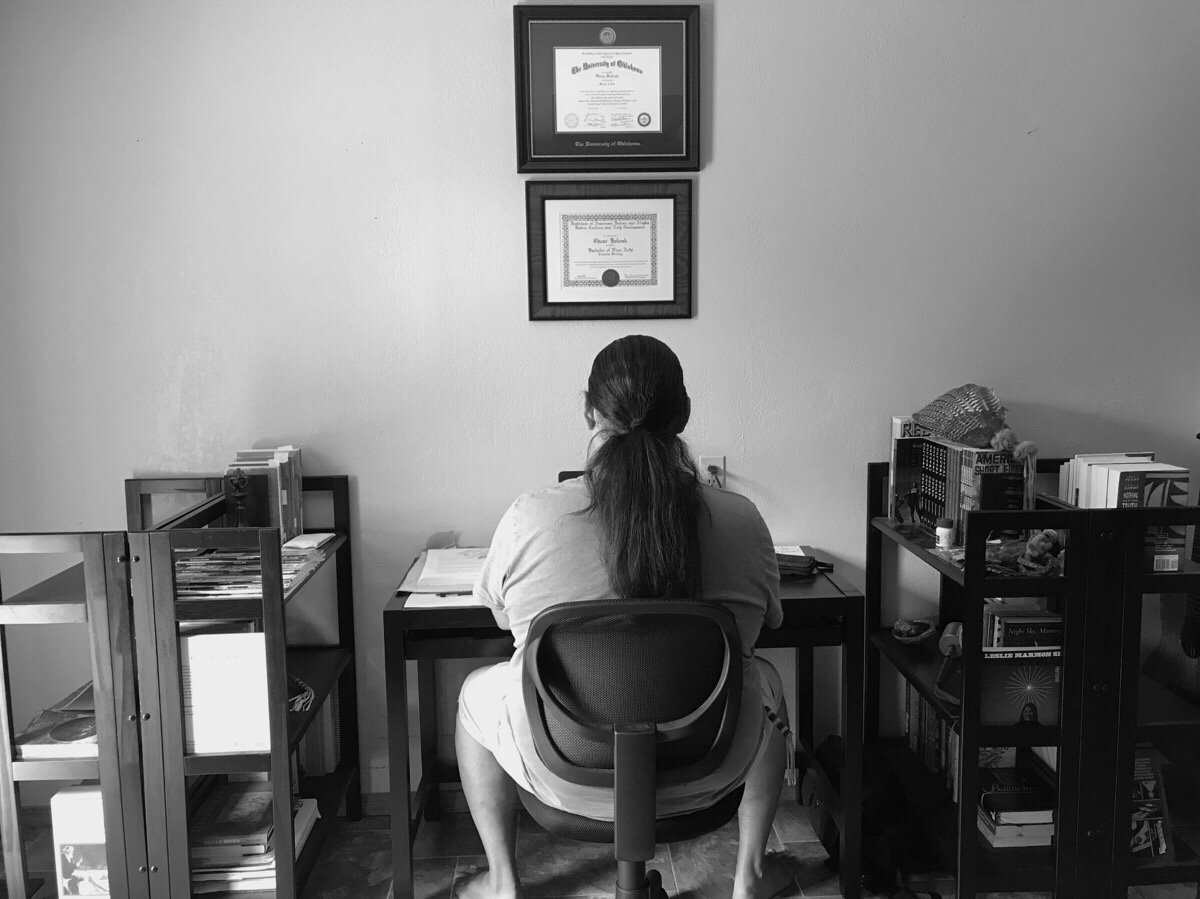
I'm not going to tell anyone how to write. We all have our nuanced approach. But what I'm going to do is share with you how I go about writing my novels. And where novel writing can be different and similar to short story writing. We've all gotten to the point where we've asked ourselves: How do I write a novel? Do I outline? If so, how do I outline multiple chapters to create an interesting story arch? Do I write in the dark for 80,000 words? If so, will my novel have deadly and boring lulls?
Do a little cross compare with my approach and fill in with your personal style. Make the process your own. That's one of the important components to any creative approach.
First thing I do: Create a OneNote file. The tabs work great to create space for each individual chapter. I always have a "development" tab, where I create multiple pages for subjects like characters, plot, subplots, story arch, etc. But I create a tab for each chapter so I can brainstorm elements within each chapter. What I need to consider for one chapter is not going to work for another. If there is a clear build up and tension to the novel, then every chapter will need a lot of space to create the nuances.
Example: If the main character is taking a child into custody in the first chapter, then I'll need space to brainstorm her approach, which will be determined by the other characters confronting her and how she will overcome that confrontation. This is radically different than the second chapter, where the main character might be confronting a whole different situation, like children adjusting to a new foster home.
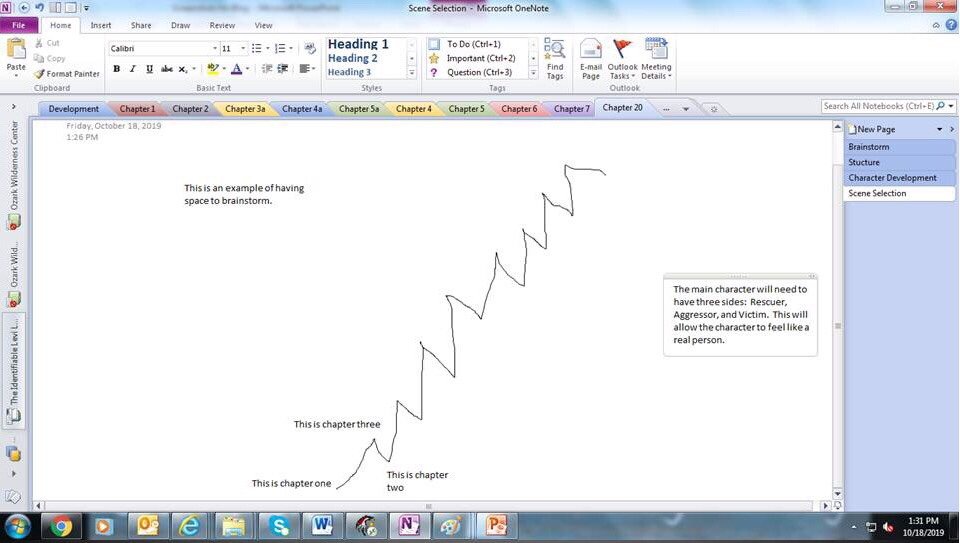
Also, I like to have all the tools in OneNote. I can draw out the build up as you can see in the image above. I can also write text boxes for each idea I need to address for development. I can also move those boxes around.
So once I have the space established to develop my novel, I then go into writing a "synopsis" of sorts. It's a line by line breakdown of the novel. It's not a full synopsis by any sorts but it gives me a quick snapshot of the progression of the main character's obstacles. Also it gives me an opportunity to consider subplots. In a novel, it's important to establish subplots that mirror or give us a break from the main story line.
Example: If the main character is a young man who is trying to overthrow his corrupt boss, then the reader will need to take a break from the ugliness transposed between the two. We can see him with his family and his family gives him stress relief as he battles with this boss, but it will simultaneously show the family putting pressure on him to be successful at work. The subplot shows a different side to this young man, and it also adds to the tension while giving the reader an alternate storyline to follow.
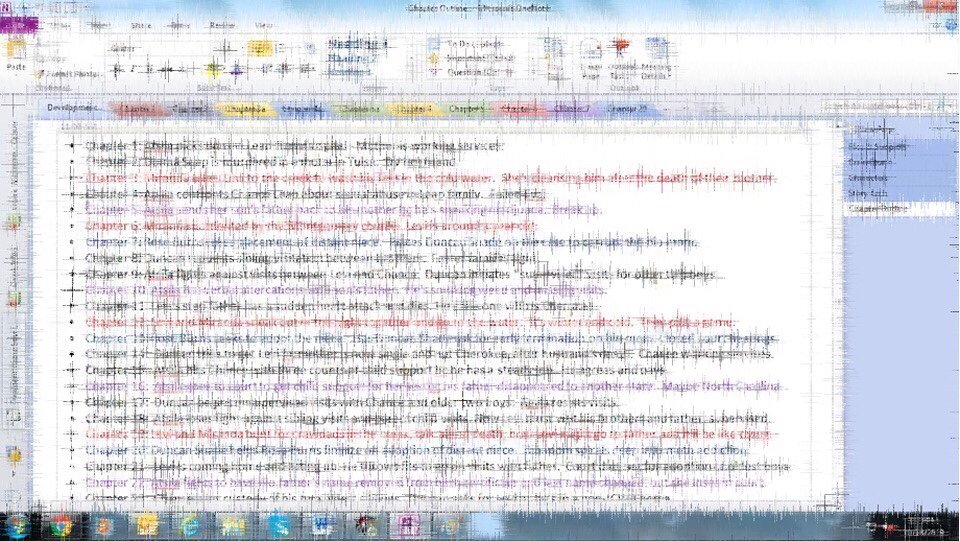
So I had to "shear" the screen because the above image is a screenshot from the current novel I'm working on. I don't want to give away any details in the novel before it reaches fruition. But as you can see in the above image, it shows a "list" of each chapter from chapter one to chapter 25. I'd also like for you to notice the different colors on each line. There are chapter breakdowns in black, red, blue, and purple. The black represents the main plot line, the red is a tightly related subplot (a subplot closely aligned with the main plot), while the blue and purple are subplots that show a seperate but nuanced mirror to the main plot (gives the reader an emotional "break" from the plot while also increasing tension).
You're probably asking why I go to such lengths to map out my novels. For me the pleasure of writing isn't only in the initial creation of a piece. I like the practice of "writing in the dark" when it comes to short stories. But when we're trying to hold someone's attention for a long period of time, there needs to be numerous components to keep the reader entertained. This is the reason I write. For other people to have as much pleasure reading the novel as I had creating it. When it's two fold, we as writers get more in return because then we have happy fans who are eager to talk about and share our writing. In order to reach that goal, there is a lot of layers to create.
I enjoy the macro development as much as the micro. As I create the big picture, outlining chapter by chapter how the main character will survive all the obstacles I throw in her way, the concept building can be euphoric. It's a physical reaction. After I've written the first draft and I'm finally ready for the details (the micro), I'm getting adrenaline from witnessing the spirit of the novel come alive in the words. Suddenly, my idea that corruption can be beaten becomes emotionally tangible when the main character throws a fist full of contracts into an evil boss's face. It all comes together.
There is nothing more exciting than seeing the DNA of a novel build word by word into a complex living system. And it takes hard mental labor to structure a story so perfectly that someone can read your work and suddenly choose to transform their worldview to include people you know and experiences you've lived. To make that connection, it's worth all the time, thought, and energy spent.
Support a Native owned Etsy shop, Allies United, where I offer unique merch for allies of social justice movements, like MMIW, Native Lives Matter and Black Lives Matter. Take a look inside my Etsy shop here: etsy.com/shop/AlliesUnited.
Underground Matriarchy: #WIP Debut Novel "Unsettled Between"
We've heard the reified stories of men brutalizing men. A rehearsal of patriarchy. In fact, hyper masculine bullshit permeates our lives. We see in the media, if not in our daily lives, the ramifications of patriarchy unchecked. So what's the answer? Men are being called out now more than ever and violence continues. Wars haven't stopped. We hear about a mass shooting in the U.S. almost everyday. In my debut novel, Unsettled Between, Ever Geimausaddle faces his own brutality with the help of an underground matriarchy.
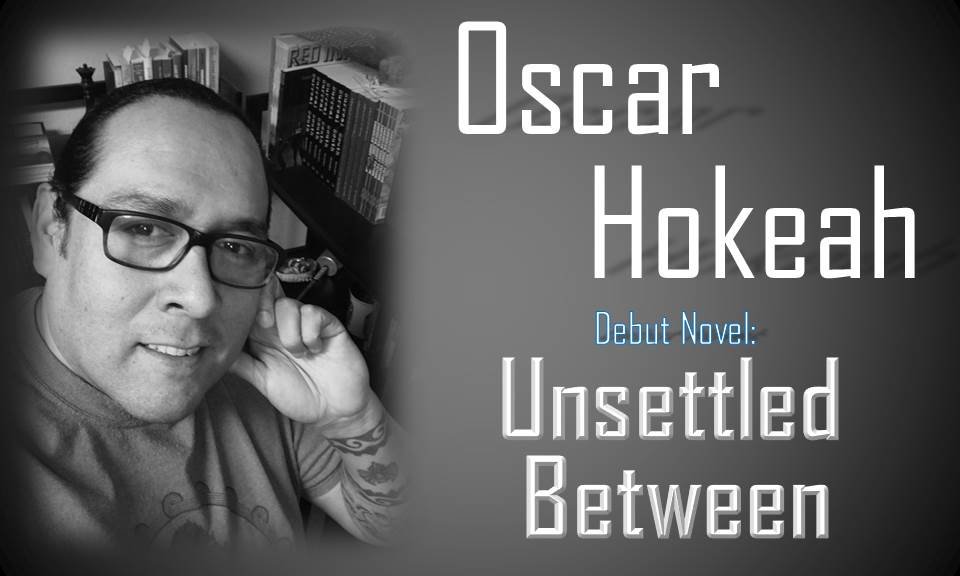
There are subcultures who maintain the values of matriarchy throughout the U.S. I'll speak here about tribal matriarchy because my experiences are based in Cherokee and Kiowa communities and culture. I'm also fortunate to belong to a family of matriarchs, where women in our family make the major decisions and delegate responsibilities.
"Our mothers echoed words they had echoed before—this time we listened. 'Being Kiowa will forever be about how we dance together.' Seemed like, being sisters, those words were a song that made them family, but more important: it made all Kiowas come together." -- Unsettled Between
Ever Geimausaddle finds himself being witness to brutality and subjected to abuse, where he develops deeply aggressive behavior. We also see this occur often in poor and disparagged communities. Ever's circumstances are no different. He encounters numerous examples of violence and domineering masculine attitudes, whether it's violence handed down from his father or colonial violence handed down from a history of conflict.
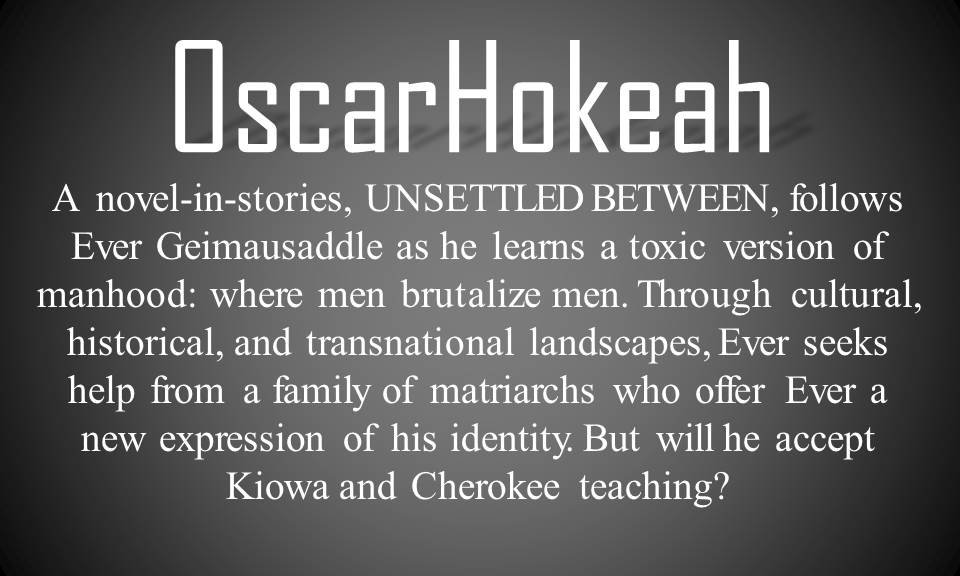
How does Ever handle these challenges? Better yet, how do the matriarchs in his family direct him? Moreover, are there matriarchal males present in his family to be role models?
"I ran into the living room, calling for my mother—ready to tattle, tell, and cry—but there was an old man sitting on the couch. He held this heavy coffee colored cane at his side. His skin had the texture of a turtle’s hide. His jaw seemed to hang lower than normal. My mother was at the store, he told me, introduced himself as an uncle, he claimed, a Bird Clan member, someone distant but a relative." -- Unsettled Between
At the end of the day, issues revolving around this current version of patriarchy needs to also be addressed by men. We, men, need to understand and then purge the violence we're trained to rehearse. Those of us who are more progressive, or who are willing to change, understand the ultimate self-destructiveness hyper masculine constructs bring.
"We were known as messengers. Cherokees depended on the Bird Clan to care for children who delivered original instructions between the spirit and material worlds. Bird Clan mothers protected birds in practical and ceremonial ways." -- Unsettled Between
Ever Geimausaddle was born into violence, rehearses violence, but he doesn't have to perpetuate violence to the next generation. In fact, if he can learn the lessons from the matriarchs in his family, he could potentially become the answer his tribal communities need: a male standing against patriarchy.
Support a Native owned Etsy shop, Allies United, where I offer unique merch for allies of social justice movements, like MMIW, Native Lives Matter and Black Lives Matter. Take a look inside my Etsy shop here: etsy.com/shop/AlliesUnited.
Story Like Bonsai are Reborn through Deadlines & Transformations
Like clipping and pruning back branches on a bonsai tree. Then we wire and train those branches to spread in the appearance of organic design reflective of the natural environment, taking careful consideration and steady hands. We have to make the right decisions. I've been revising Unsettled Between over the last two months and it's been a transformative process not only for the novel but for me as well. Writers get the pleasure of constant reflection, taking what's occurred in our own life and looking for material. I've always used my personal experiences to write fiction. There is no better way to draw unique and resonate stories. When I have a personal investment in the story, I tend to write with more intensity. This transfers well to the reader. They get more emotion and have a stronger connection to the characters. When I can relate to a character, whether this is in likeable or unlikable ways, I tend to be more interested to know how the story will turn out.I'm reminded of Alice Munro's short story, Child's Play. The main character is terribly unlikable. She's bitterly judgmental and cold. Then ultimately she commits the worst act imaginable. I've read this story at least two dozen times, and I shake my head every time I come to the ending. Munro expertly develops a character who I simultaneously hate and for some reason: I can't turn away. I have to read to the last word. And it pays off.Then I wonder if this character's personality is reflective of someone in Munro's life. Where did she get the inspiration to draw such a character?I turned in revisions for my novel, Unsettled Between, today. Today was the deadline. And I love deadlines. And I love feedback. Like cultivating bonsai, feedback and deadlines give me the shape and inspiration to complete a naturally flowing design for a novel.
Writers get the pleasure of constant reflection, taking what's occurred in our own life and looking for material. I've always used my personal experiences to write fiction. There is no better way to draw unique and resonate stories. When I have a personal investment in the story, I tend to write with more intensity. This transfers well to the reader. They get more emotion and have a stronger connection to the characters. When I can relate to a character, whether this is in likeable or unlikable ways, I tend to be more interested to know how the story will turn out.I'm reminded of Alice Munro's short story, Child's Play. The main character is terribly unlikable. She's bitterly judgmental and cold. Then ultimately she commits the worst act imaginable. I've read this story at least two dozen times, and I shake my head every time I come to the ending. Munro expertly develops a character who I simultaneously hate and for some reason: I can't turn away. I have to read to the last word. And it pays off.Then I wonder if this character's personality is reflective of someone in Munro's life. Where did she get the inspiration to draw such a character?I turned in revisions for my novel, Unsettled Between, today. Today was the deadline. And I love deadlines. And I love feedback. Like cultivating bonsai, feedback and deadlines give me the shape and inspiration to complete a naturally flowing design for a novel.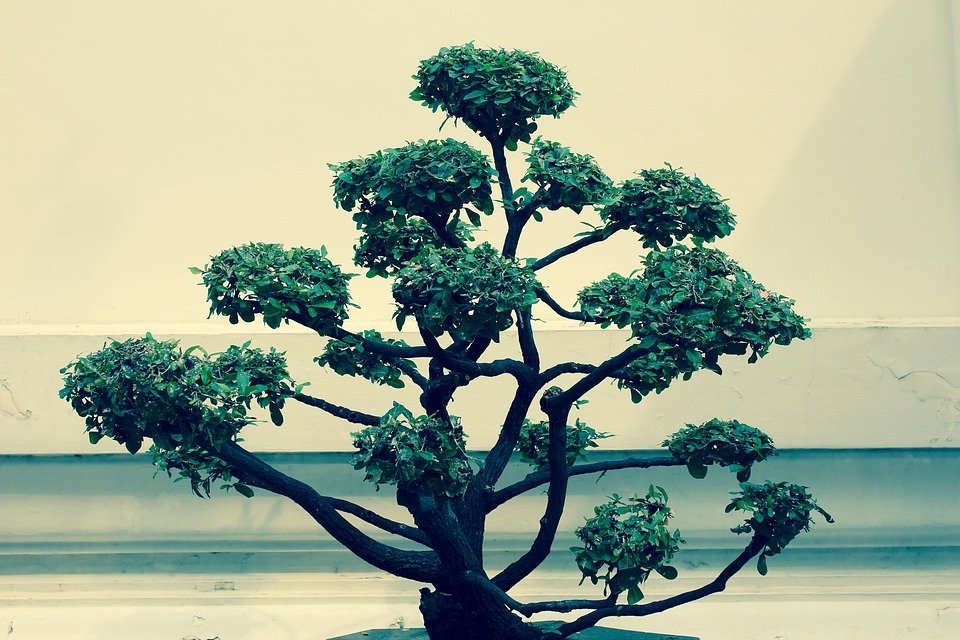 And like anything worth doing, I learned something new about myself during this round of revisions. Or maybe it was a remembering. That I can't force anything. The first month, July, I had such a hard time. I needed to replot my opening chapter so in essence it was going to become a different story, like making a tree into a bonsai--transformation was needed. It all came out and I was very pleased with the outcome, but the story seemed to want to do things on it's own timeline. The story told me what it wanted. I didn't tell it. This was something I knew--to allow the story to shape itself--but there was a part of me that wanted to force things to happen. And I was beat back everytime I tried.Once I let go, the story wrote itself. It was organic. The branches grew toward the sun and it became a much more pleasing process. Certainly, I pruned and trimmed and clipped a few leaves here and there. What bonsai enthusiast wouldn't? What writer wouldn't? But I worked with the structure rather than forcing it. The two main characters, protagonist and antagonist, battled it out and wrote the story for me. I simply sat back and watched the story manifest.
And like anything worth doing, I learned something new about myself during this round of revisions. Or maybe it was a remembering. That I can't force anything. The first month, July, I had such a hard time. I needed to replot my opening chapter so in essence it was going to become a different story, like making a tree into a bonsai--transformation was needed. It all came out and I was very pleased with the outcome, but the story seemed to want to do things on it's own timeline. The story told me what it wanted. I didn't tell it. This was something I knew--to allow the story to shape itself--but there was a part of me that wanted to force things to happen. And I was beat back everytime I tried.Once I let go, the story wrote itself. It was organic. The branches grew toward the sun and it became a much more pleasing process. Certainly, I pruned and trimmed and clipped a few leaves here and there. What bonsai enthusiast wouldn't? What writer wouldn't? But I worked with the structure rather than forcing it. The two main characters, protagonist and antagonist, battled it out and wrote the story for me. I simply sat back and watched the story manifest. Now I've given my novel, Unsettled Between, to my agent, Allie Levick. I'm excited. Nervous, yes, but ultimately ready for the good things coming. Whether it's another round of revisions or steps toward acquisition, I'm grateful for the novel's transformation and it's becoming something unique and powerful. I reflect, now, on a year ago and remember how the novel was, thinking of the small growth and the subtle shifts. It has not only grown, but with expert hands my agent and I have shaped it into a very interesting story--so much so, this story is new in it's form and concept, allowing me to dream of the moment when I can announce, "This is a story that has never been told."
Now I've given my novel, Unsettled Between, to my agent, Allie Levick. I'm excited. Nervous, yes, but ultimately ready for the good things coming. Whether it's another round of revisions or steps toward acquisition, I'm grateful for the novel's transformation and it's becoming something unique and powerful. I reflect, now, on a year ago and remember how the novel was, thinking of the small growth and the subtle shifts. It has not only grown, but with expert hands my agent and I have shaped it into a very interesting story--so much so, this story is new in it's form and concept, allowing me to dream of the moment when I can announce, "This is a story that has never been told."
Support a Native owned Etsy shop, Allies United, where I offer unique merch for allies of social justice movements, like MMIW, Native Lives Matter and Black Lives Matter. Take a look inside my Etsy shop here: etsy.com/shop/AlliesUnited.
(Images borrowed from Pixabay.com, commons.wikimedia.org, and needpix.com)
Fourth Wall Subtleties as Tool for Liberation in Native American Context
Suppose you're at a coffee shop and you're telling your best friend about your workday. You're saying so-and-so is building a case to take to human resources and will file a lawsuit soon. So-and-so has evidence of coercion and retaliation. Maybe it's based on gender. Maybe it's based on race. So-and-so will also file with the Equal Employment Opportunity Commission as a federal employee complaint due to implicit biases at work. Then you notice someone at the next table staring and listening with interest at all the juicy details.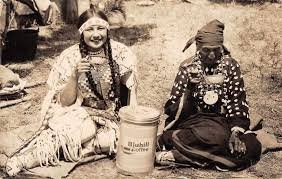 At this point you could choose to ignore the person and finish the story with your friend. But instead you acknowledge your listener by saying, "You should've been there," and then continue.Breaking the fourth wall is acknowledging the reader or disrupting the illusion of a fictional space. In post modernist literary terms it's called metafiction or authorial intrusion and meant to disrupt a structured order, especially one bent on maintaining hierarchies. Metafiction can happen in a variety of ways, such as an author inserting themselves into the story line or using a second person narrator or using a peripheral narrator who slips into the second person use of "you." The latter gives the audience the sense of listening over someone's shoulder, like the coffee shop scenario above.So why use this method? It's not common in literature. In fact, breaking the fourth wall is a stage or screen term and it happens in a movie when a character either looks at the camera or addresses the camera, meaning the audience.Many authors insert themselves into the story line and typically this is more of self congratulating behavior rather than having any real substance. In Bronte's Jane Eyre, she has Jane address the audience as a reaction to her loneliness. It enhances the story and character, as opposed to drawing attention to the author.As many of you know, I'm working through the final revisions of my novel. In this phase, I tend to contemplate anything and everything. I like to reason all the variables. Why I would approach a story a certain way. Or in this case: a novel.
At this point you could choose to ignore the person and finish the story with your friend. But instead you acknowledge your listener by saying, "You should've been there," and then continue.Breaking the fourth wall is acknowledging the reader or disrupting the illusion of a fictional space. In post modernist literary terms it's called metafiction or authorial intrusion and meant to disrupt a structured order, especially one bent on maintaining hierarchies. Metafiction can happen in a variety of ways, such as an author inserting themselves into the story line or using a second person narrator or using a peripheral narrator who slips into the second person use of "you." The latter gives the audience the sense of listening over someone's shoulder, like the coffee shop scenario above.So why use this method? It's not common in literature. In fact, breaking the fourth wall is a stage or screen term and it happens in a movie when a character either looks at the camera or addresses the camera, meaning the audience.Many authors insert themselves into the story line and typically this is more of self congratulating behavior rather than having any real substance. In Bronte's Jane Eyre, she has Jane address the audience as a reaction to her loneliness. It enhances the story and character, as opposed to drawing attention to the author.As many of you know, I'm working through the final revisions of my novel. In this phase, I tend to contemplate anything and everything. I like to reason all the variables. Why I would approach a story a certain way. Or in this case: a novel. As a Native American writer, it's especially important to have readers understand the Native world is not a fantasy world. It's real and filled with real consequences. I have to say this aloud because unfortunately many readers view our world as "romantic." Tragic, yes. But romantic. Meaning, Native lives are so far removed that many readers feel they can get lost among our pages in the same fashion as following around Frodo Baggins in the Lord of the Rings.
As a Native American writer, it's especially important to have readers understand the Native world is not a fantasy world. It's real and filled with real consequences. I have to say this aloud because unfortunately many readers view our world as "romantic." Tragic, yes. But romantic. Meaning, Native lives are so far removed that many readers feel they can get lost among our pages in the same fashion as following around Frodo Baggins in the Lord of the Rings. Ultimately, I insert myself into one of my story/chapters in order pull the reader out of the pages for a moment so as to consider these circumstances are not fantasy, but these types of things really happen in the Native world. Moreover, I harness the use of the "you" as a second person narrator addressing the main character so as to give the reader an opportunity to reflect on the character as potentially like themselves, where they have a short period of time where they get to "walk in his shoes." More or less, to humanize the character and allow the reader time to step back from their fantastical perspective.When you come from a world where colonization has transformed itself into distorting Native ideologies, you're going to want to help people understand it's not okay to romanticize us because it leads to exploitation. In that case, breaking the fourth wall or authorial intrusion becomes a tool for liberation.
Ultimately, I insert myself into one of my story/chapters in order pull the reader out of the pages for a moment so as to consider these circumstances are not fantasy, but these types of things really happen in the Native world. Moreover, I harness the use of the "you" as a second person narrator addressing the main character so as to give the reader an opportunity to reflect on the character as potentially like themselves, where they have a short period of time where they get to "walk in his shoes." More or less, to humanize the character and allow the reader time to step back from their fantastical perspective.When you come from a world where colonization has transformed itself into distorting Native ideologies, you're going to want to help people understand it's not okay to romanticize us because it leads to exploitation. In that case, breaking the fourth wall or authorial intrusion becomes a tool for liberation.
(Images were borrowed from Wikimedia, Wikipedia, and ferris.edu)
Underling Mentality in "The Smurfs:" Why Azrael Allows Himself to be Abused by Gargamel
No one believes themselves to be like Azrael. If we had to choose between the cat and Gargamel, we'd all choose Gargamel--if push came to shove. We'd rather be neither, or think of ourselves as neither. But we're one or the other in someone's eyes. This article is an examination of how the "underling" can allow himself to be abused. And maybe we can resolve: Why we allow people in power to control us.
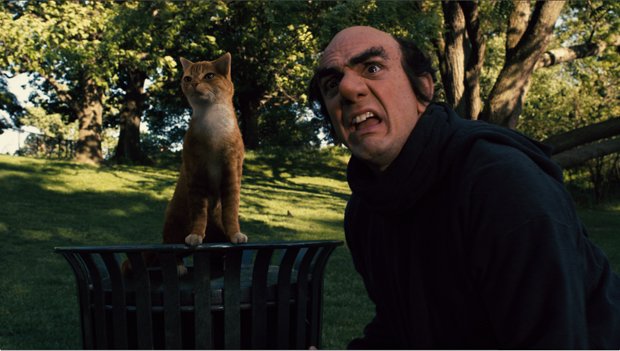
Look around your office. Assess a hierarchy. Who is running the show? Who is the underling? To discover the underling, identify the person who gets in hot water the most. Underlings always receive more abuse. They will throw themselves into a pit of wild boars just to appease their master.
There is always a discerning quality to the person "running the show." They never get in trouble. They send their underlings out to do the dirty work. So the underlings are the ones who get attacked, receive blame, and punished. Meanwhile, their master sits over there as comfy as can be, living life without a worry in the world.
"Often in codependent relationships, one partner – sometimes an addict, narcissist, or abuser – wields power over the other." -- Darlene Lancer, JD, MFT
I worked in a group home setting for six years and the staff were trained to identify who was the leader, so as to identify who was truly causing the others to act out. It was always the one who never got in trouble. He made underhanded comments, which propelled the others to become violent. As soon as we identified who caused the issue and pointed out to the residents how they were manipulated, all of a sudden the violence went down.
We're all asking: How can someone have such little self-respect that they allow themselves to be abused and manipulated?
I'm not going into the details of that deep psychosis. Neither of us have that kind of time. But we can use a movie like The Smurfs to quickly deduce a type of reward system. In The Smurfs movie, Azrael wants to eat a Smurf. Likewise, Gargamel wants to capture the Smurfs to drain them of their power and use the power for himself. This very simple structural technique quickly points to a human condition to band together with someone for a common goal.
"The power paradox requires that we be ever vigilant against the corruptive influences of power and its ability to distort the way we see ourselves and treat others." -- Dacher Keltner in The Power Paradox
Azrael will laugh at Gargamel when The Smurfs make Gargamel look like a fool, and in some of the cartoon episodes Azrael turns against Gargamel. But ultimately, Azrael allows Gargamel to treat him terribly and abuse him, whether physical or verbally.
Now take a look around your office again. Who acts like an Azrael? Now, who is their Gargamel? How does the Azrael subject themselves to abuse? Do they get insulted? Does the Azrael do things that will potentially get themselves fired? How does the Gargamel provoke others to act? What is the Azrael's reward? Why would they allow themselves to be used?
~~~
If you enjoyed this article, support a Native author and order Oscar Hokeah’s debut novel, CALLING FOR A BLANKET DANCE: Bookshop, Barnes & Noble, Amazon, Target, Walmart, Books-A-Million, IndieBound
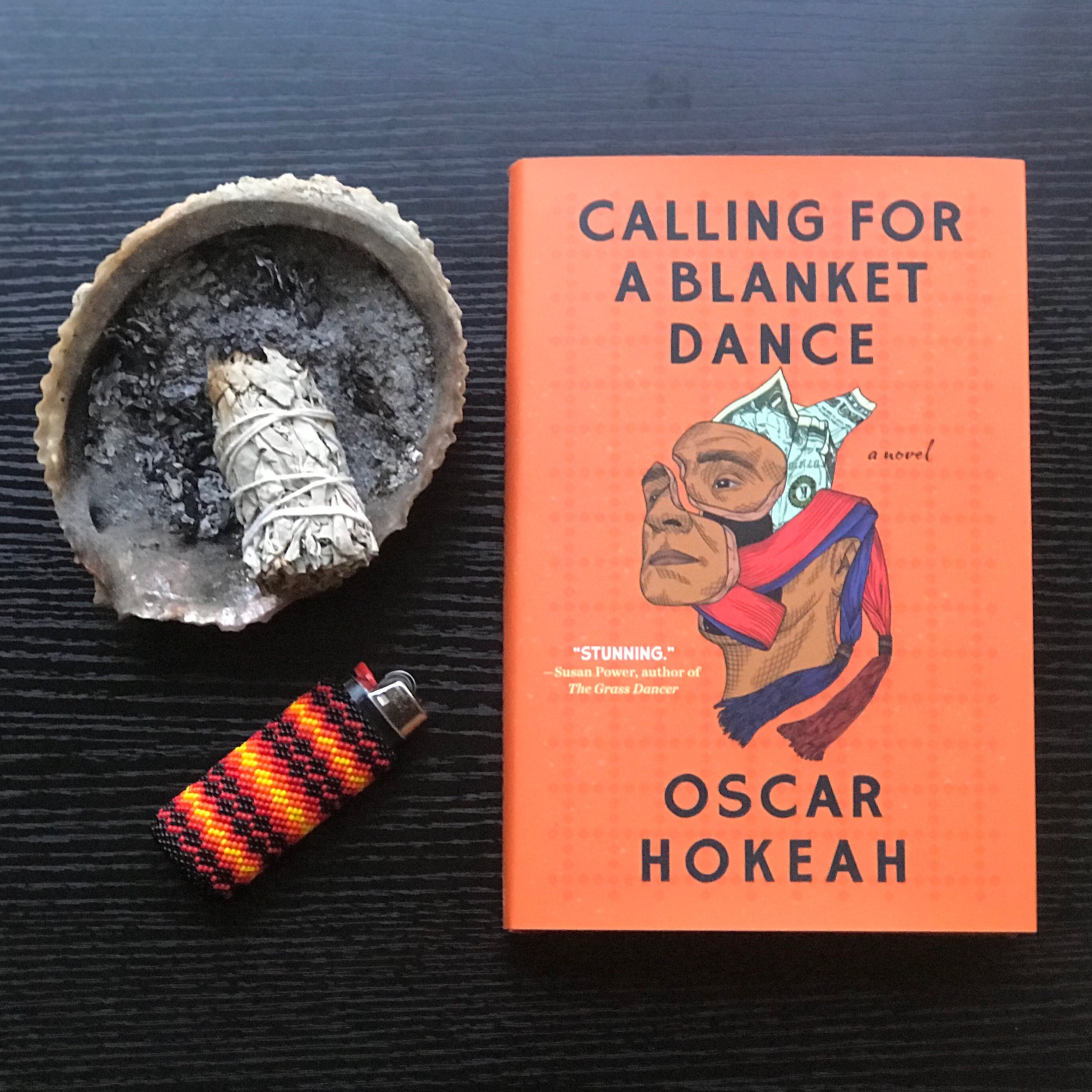
From the Edge of a Cliff to Under a Bus: Living Under the Dark Skinned Microscope
Have you ever felt like you were being watched? It's a creepy feeling. And then you look up to find someone staring. Your instincts picked up on the energy and you knew before looking that someone was watching you. When I encounter implicit bias, it has the same effect. I know when I'm being targeted with excess negative attention. I wonder why someone is so concerned about me in my life, when I have zero interest in theirs. The person comes off as creepy, and likely harbors underlying racist and sexist ideologies about dark skinned males.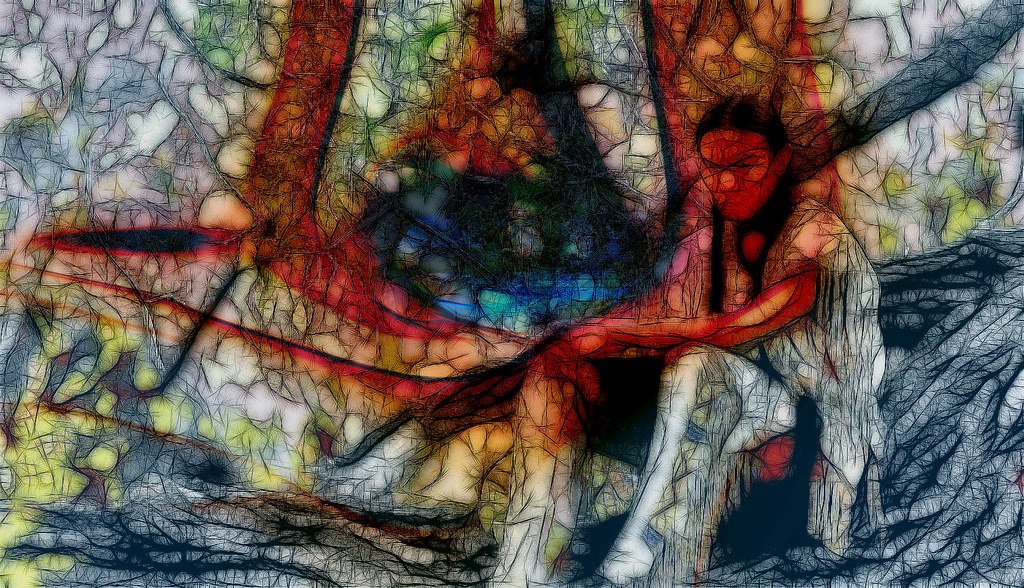 There are numerous articles on implicit bias so I'm not going into detail about how it works. The baseline: society, community, family low key trains us to look at individuals with biases. Dark skinned males are always assumed to be criminals so we are watched much closer. So much so, people keep watching until the slightest mistake occurs and then they attempt to blow it out of proportion. Fortunately, in my circumstances, the overreaction has been so blatantly noticeable it quickly becomes dismissible and the person looks like a psychopath.I'd like to write about the above mentioned pattern. This pattern isn't something typically covered by the "implicit bias" articles. It has to do with manifest destiny. Not the manifest destiny that came out of Europe centuries ago and massacred millions of Native Americans. But it is akin. If you believe it, it will come.What I've found in my personal life and work life are repeated, almost predictable, patterns where individuals will attempt to throw me under the bus. Meaning, they will find the smallest opportunity to try to get me in trouble with superiors. People believe dark skinned males to be criminal, but when we are more concerned with reading books rather than committing crimes then they subconsciously seek out ways to make us criminals.What happens? I have to stay within the lines more so than people around me. I can see people wasting entire days of time with school work or personal phone calls. But my entire day is tracked. I'll stand from my cubicle and someone will quickly ask, "Are you leaving?" I'll say, "No, I'm just going to the bathroom." If incidents like this happened in isolation, then I'd dismiss them. But I have consistently been asked arbitrary questions about what I'm doing. Then it's contrasted when no one else around me receives the same line of questioning. This has occurred throughout my entire working and academic career. Even my bathroom visits receive comments. I have to time my daily 15 minute breaks at work to be at the exact same time everyday, while other workers can spend hours gossiping. Those are just some examples of the many I face everyday when I walk out of my door.
There are numerous articles on implicit bias so I'm not going into detail about how it works. The baseline: society, community, family low key trains us to look at individuals with biases. Dark skinned males are always assumed to be criminals so we are watched much closer. So much so, people keep watching until the slightest mistake occurs and then they attempt to blow it out of proportion. Fortunately, in my circumstances, the overreaction has been so blatantly noticeable it quickly becomes dismissible and the person looks like a psychopath.I'd like to write about the above mentioned pattern. This pattern isn't something typically covered by the "implicit bias" articles. It has to do with manifest destiny. Not the manifest destiny that came out of Europe centuries ago and massacred millions of Native Americans. But it is akin. If you believe it, it will come.What I've found in my personal life and work life are repeated, almost predictable, patterns where individuals will attempt to throw me under the bus. Meaning, they will find the smallest opportunity to try to get me in trouble with superiors. People believe dark skinned males to be criminal, but when we are more concerned with reading books rather than committing crimes then they subconsciously seek out ways to make us criminals.What happens? I have to stay within the lines more so than people around me. I can see people wasting entire days of time with school work or personal phone calls. But my entire day is tracked. I'll stand from my cubicle and someone will quickly ask, "Are you leaving?" I'll say, "No, I'm just going to the bathroom." If incidents like this happened in isolation, then I'd dismiss them. But I have consistently been asked arbitrary questions about what I'm doing. Then it's contrasted when no one else around me receives the same line of questioning. This has occurred throughout my entire working and academic career. Even my bathroom visits receive comments. I have to time my daily 15 minute breaks at work to be at the exact same time everyday, while other workers can spend hours gossiping. Those are just some examples of the many I face everyday when I walk out of my door.
It has to do with manifest destiny. Not the manifest destiny that came out of Europe centuries ago and massacred millions of Native Americans. But it is akin. If you believe it, it will come.
Ultimately, it has given me a stronger work ethic. When everyone is trying to turn you into something you're not, you become more of who you really are. I'm a work horse. Dependable. And focused. I show up for my kids. I'm proud to be a nurturing father. At the end of the day, my children and my family are the reasons I stay the course. Implicit bias isn't going fade away because we are aware. Most institutions where I've worked and attended for my education have trained staff and students on implicit bias. For a few months afterwards, I get less monitoring and harassment. But after time passes, it always starts back up again. Like taking care of my family isn't enough, I also get the pleasure of walking the edges of a cliff.
Chaotic Resonance of the Echo Chamber
We're tweeting and sharing and posting. We touch on a politically sensitive subject. And we don't hesitate to engage in a friendly dialogue amongst community members. This is how folks learn. The back and forth sway. As we all know, a simple text exchange can quickly turn a meal of delicacies into a food fight.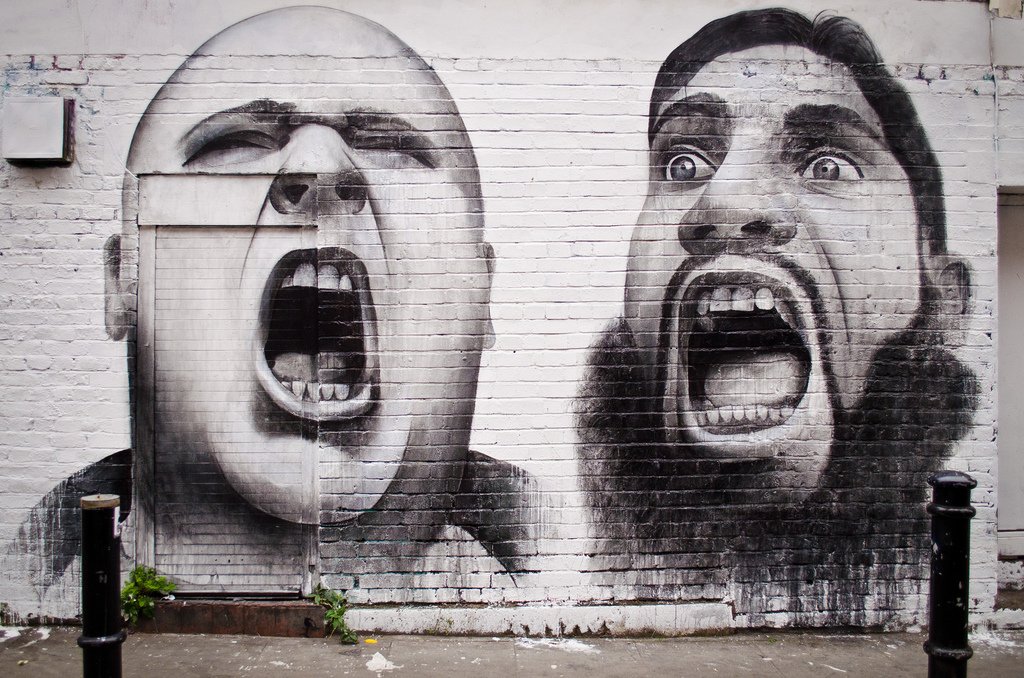 How do you handle these situations? People can get defensive and hurl insults and redirect the conversation to be something personal. Maybe the person was having a bad day and was ready to conflict with anyone, and you happened to be at the wrong place at the wrong time. Or maybe you unknowingly overstepped a boundary. Either way, an issue was created. Then we must determine: Is this salvageable? Or do we part ways?Social media allows us to develop online allies who echo our sentiment, but our allies might not share the same ideology so there can be conflict. Being an ally doesn't mean we're supposed to agree on every angle of an issue. We might agree on the issue, but the approach can be different. Allyship also doesn't mean people have license to verbally abuse someone. I don't get to attack you because you misunderstand a nuance within Native culture. And vise versa. You don't get to attack me for advocating for my tribal communities. It's a frail rope we walk, but one worth walking. And will pave a path for new methods in forming society. First, we must productively engage.Since social media disassociates physical proximity from verbalized ideology, how do you respond to issues of contention? Do you immediately block someone? Do you withhold your thoughts to save an argument? Do you ask someone to take a break from the exchange? Or do you repeatedly engage until either you or the other person grows tired enough to unfollow and block? How do you handle the chaotic resonance of the echo chamber?
How do you handle these situations? People can get defensive and hurl insults and redirect the conversation to be something personal. Maybe the person was having a bad day and was ready to conflict with anyone, and you happened to be at the wrong place at the wrong time. Or maybe you unknowingly overstepped a boundary. Either way, an issue was created. Then we must determine: Is this salvageable? Or do we part ways?Social media allows us to develop online allies who echo our sentiment, but our allies might not share the same ideology so there can be conflict. Being an ally doesn't mean we're supposed to agree on every angle of an issue. We might agree on the issue, but the approach can be different. Allyship also doesn't mean people have license to verbally abuse someone. I don't get to attack you because you misunderstand a nuance within Native culture. And vise versa. You don't get to attack me for advocating for my tribal communities. It's a frail rope we walk, but one worth walking. And will pave a path for new methods in forming society. First, we must productively engage.Since social media disassociates physical proximity from verbalized ideology, how do you respond to issues of contention? Do you immediately block someone? Do you withhold your thoughts to save an argument? Do you ask someone to take a break from the exchange? Or do you repeatedly engage until either you or the other person grows tired enough to unfollow and block? How do you handle the chaotic resonance of the echo chamber?
Support a Native owned Etsy shop, Allies United, where I offer unique merch for allies of social justice movements, like MMIW, Native Lives Matter and Black Lives Matter. Take a look inside my Etsy shop here: etsy.com/shop/AlliesUnited.
(Image above was borrowed from Flickr)







